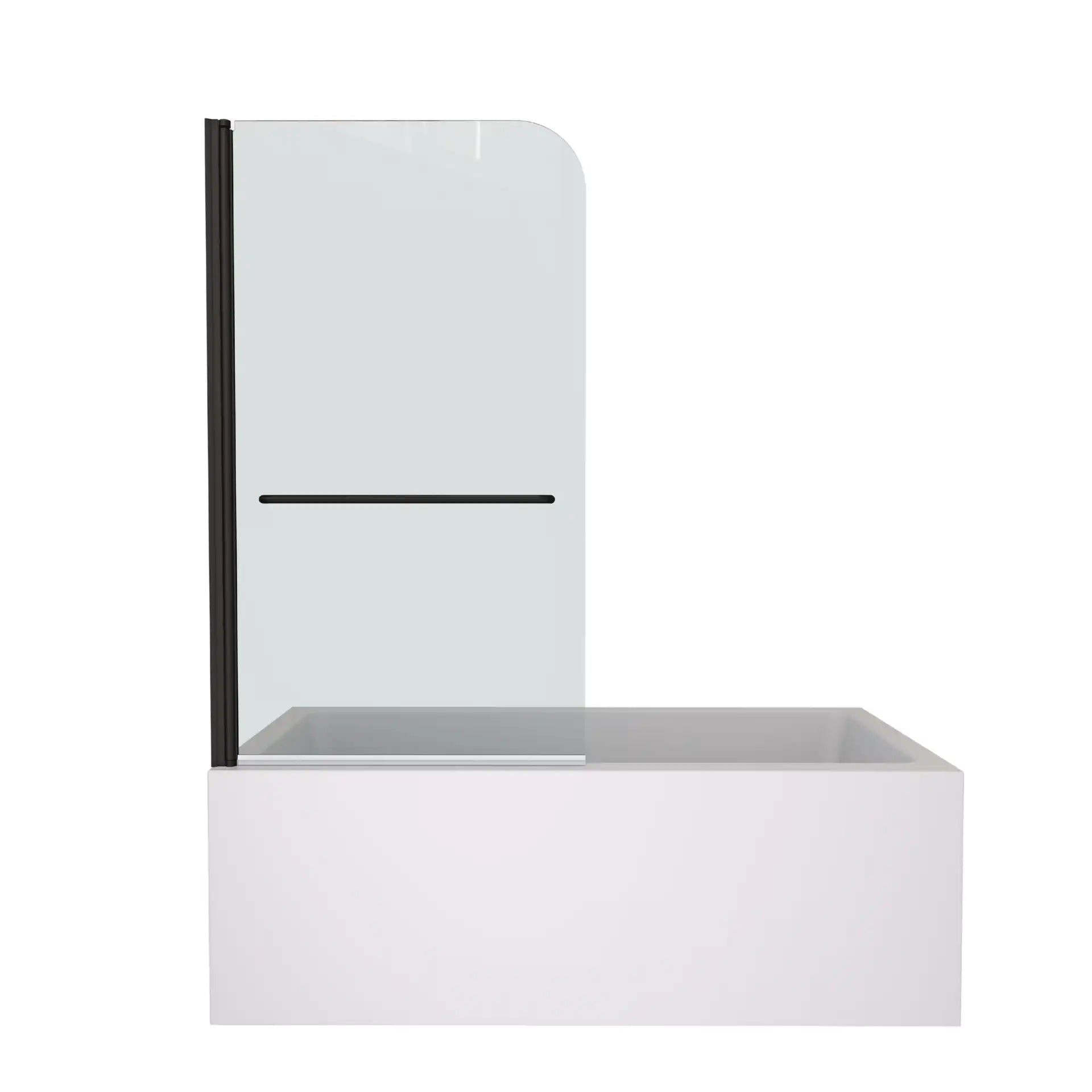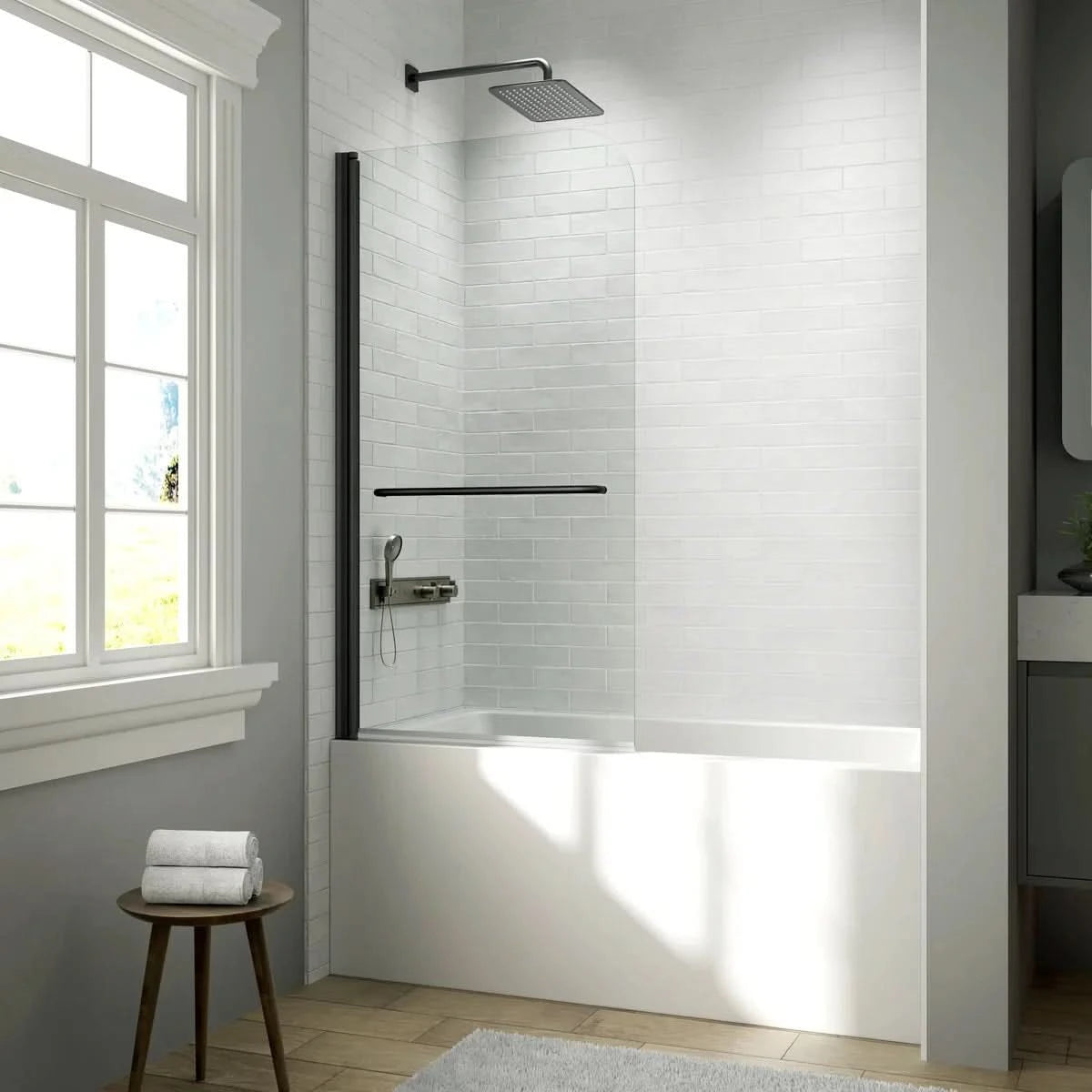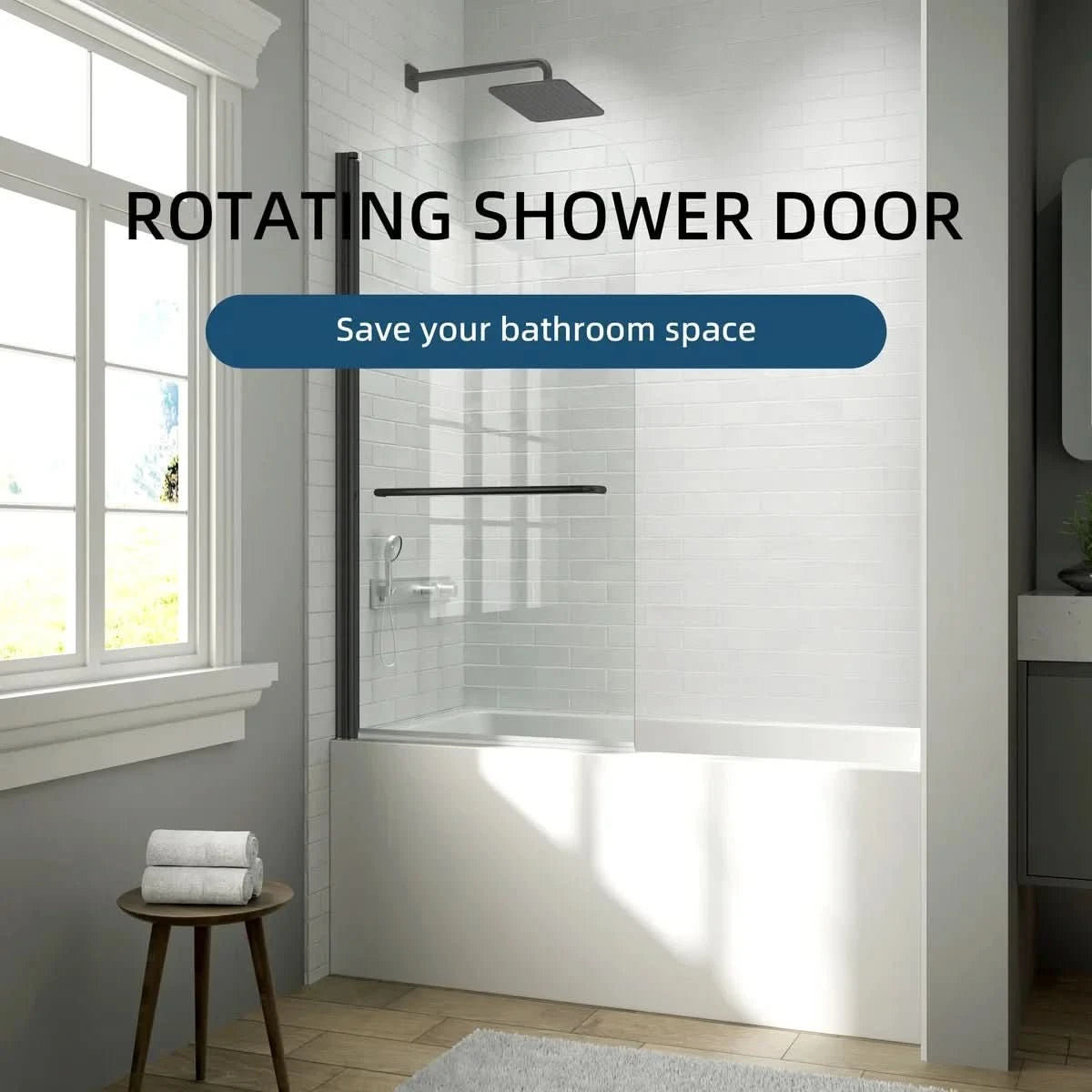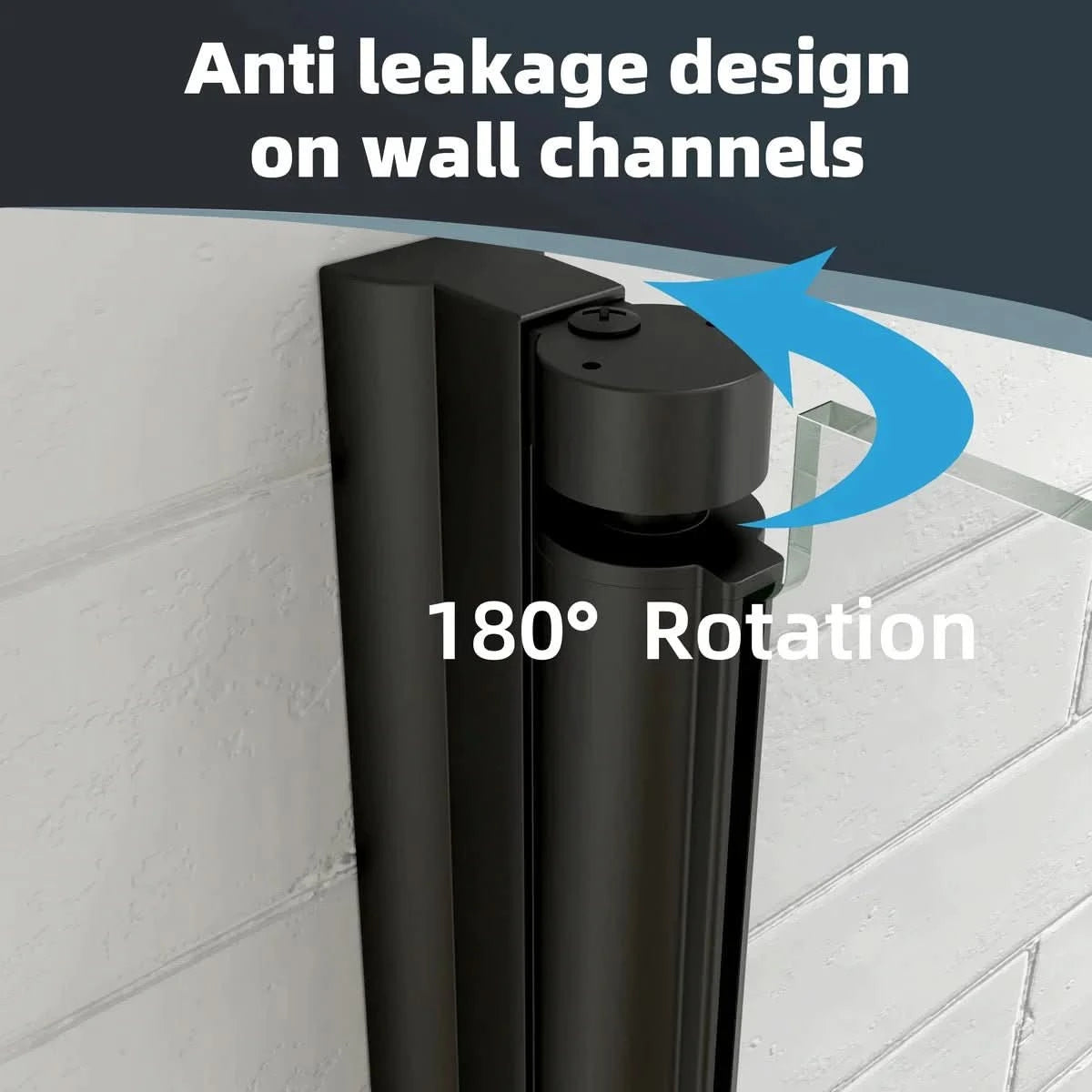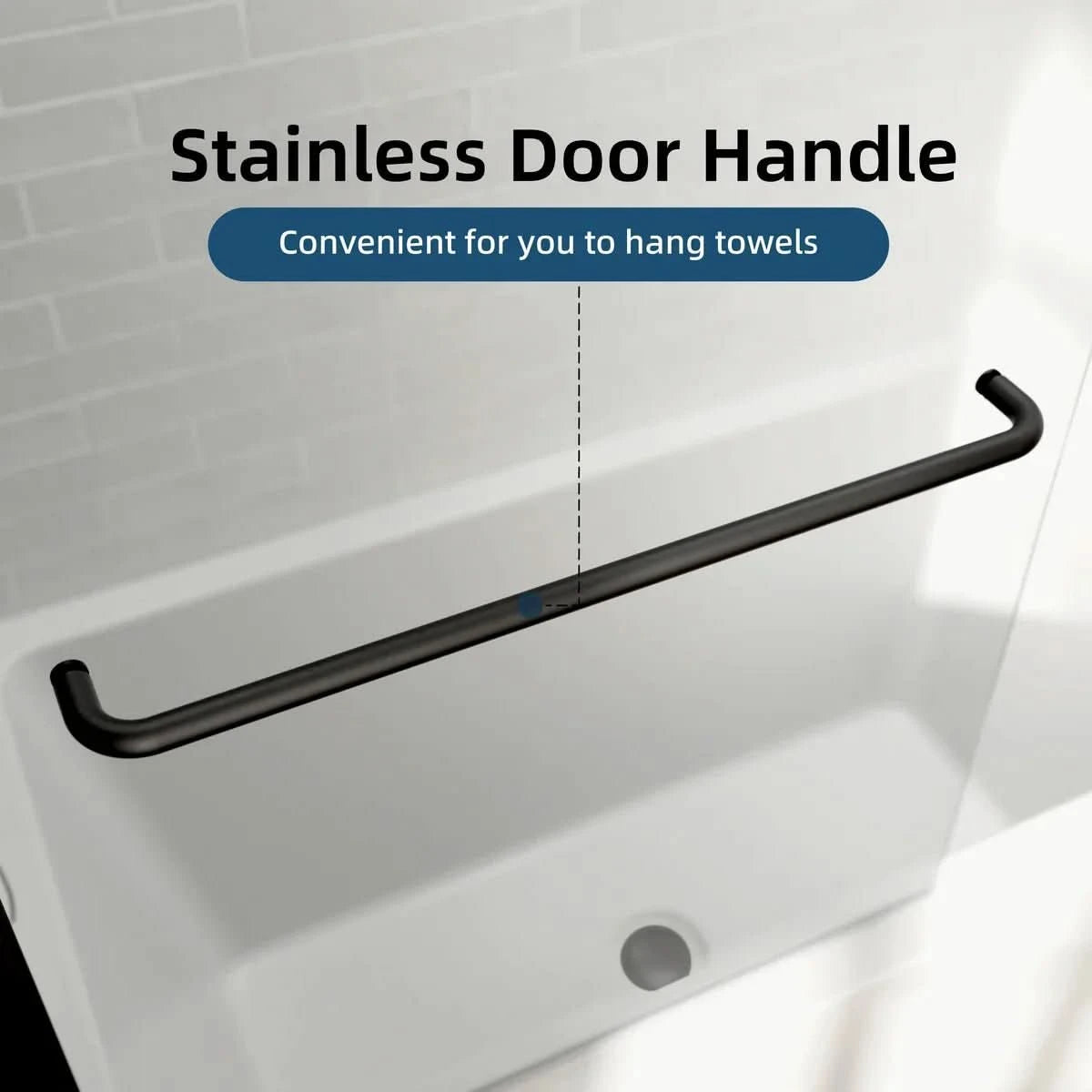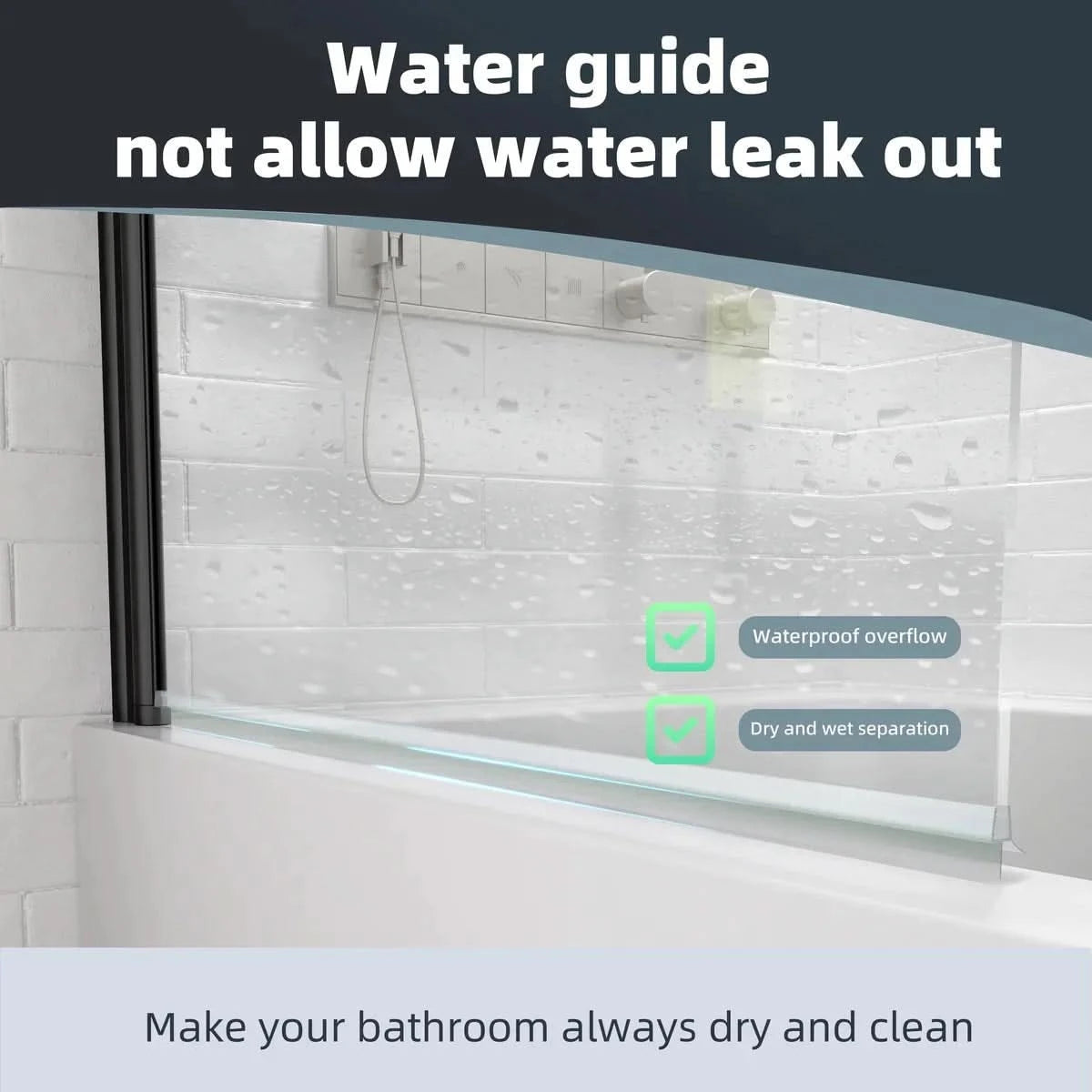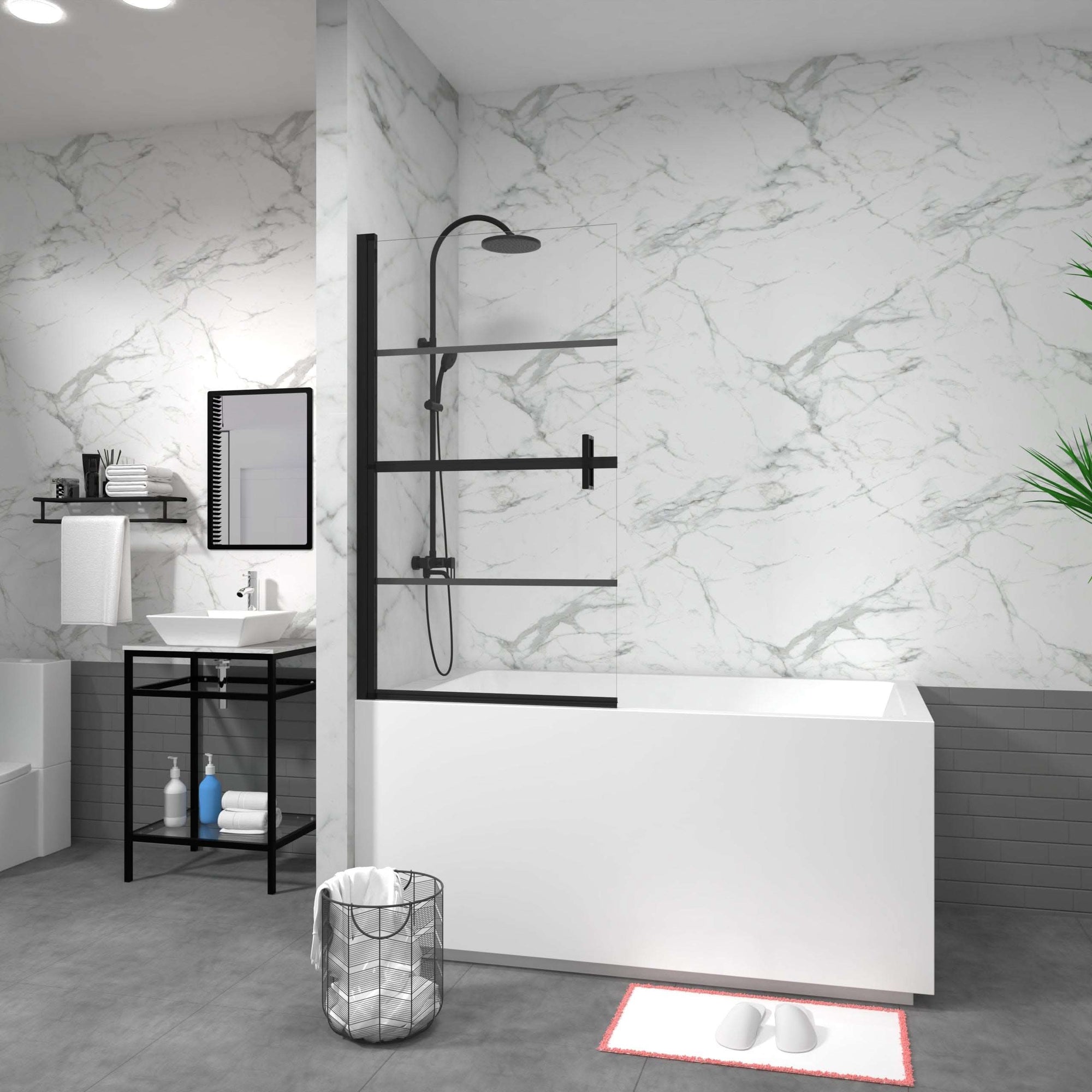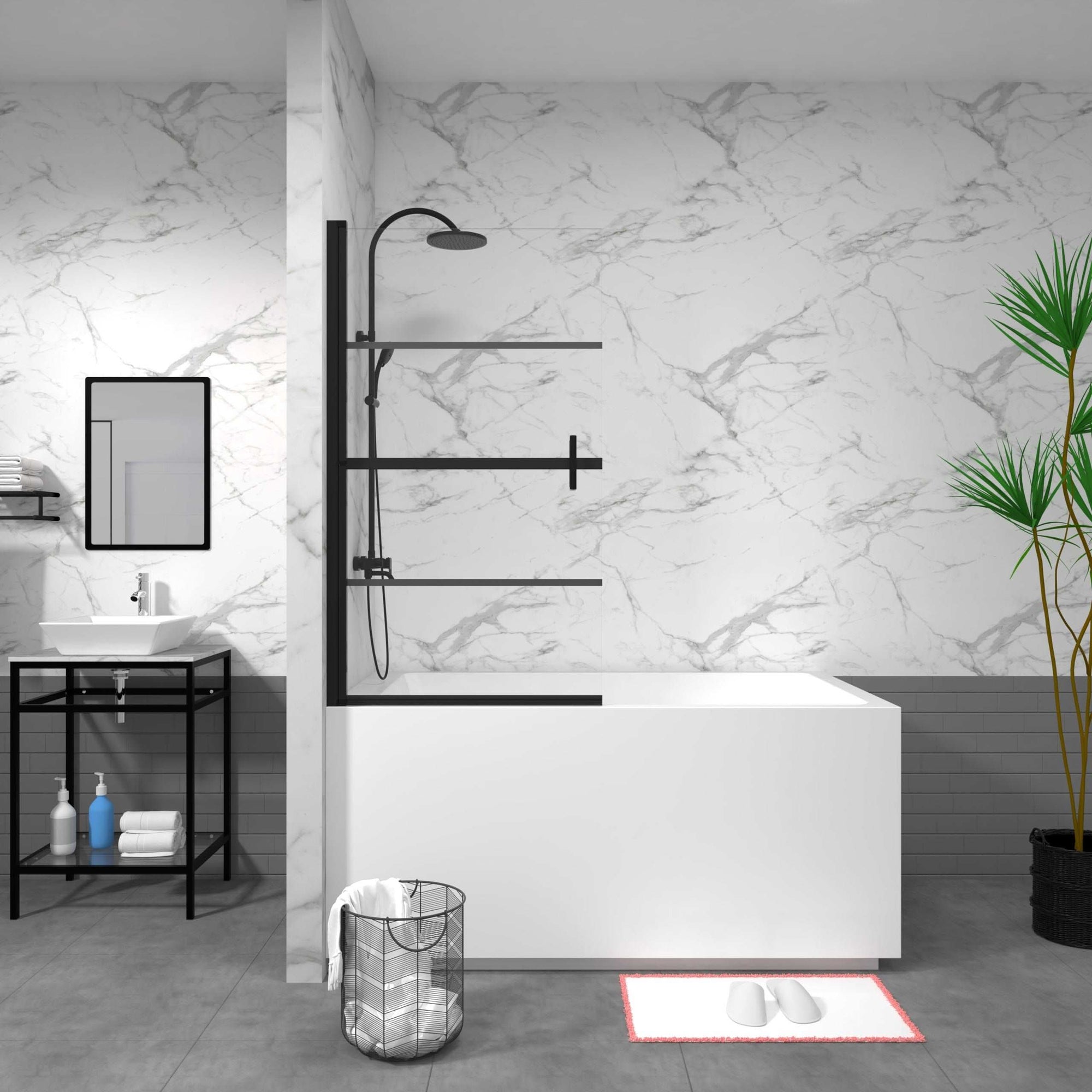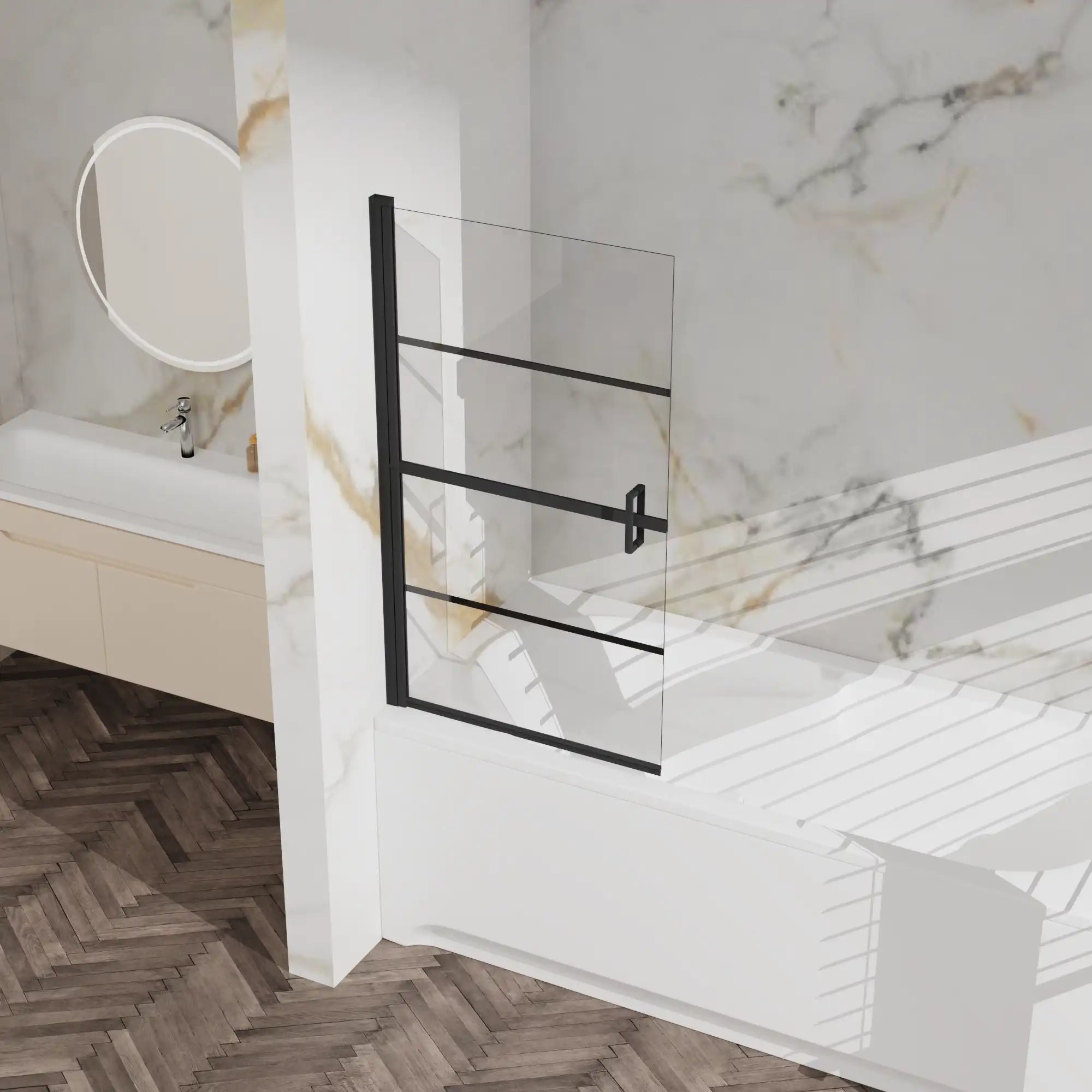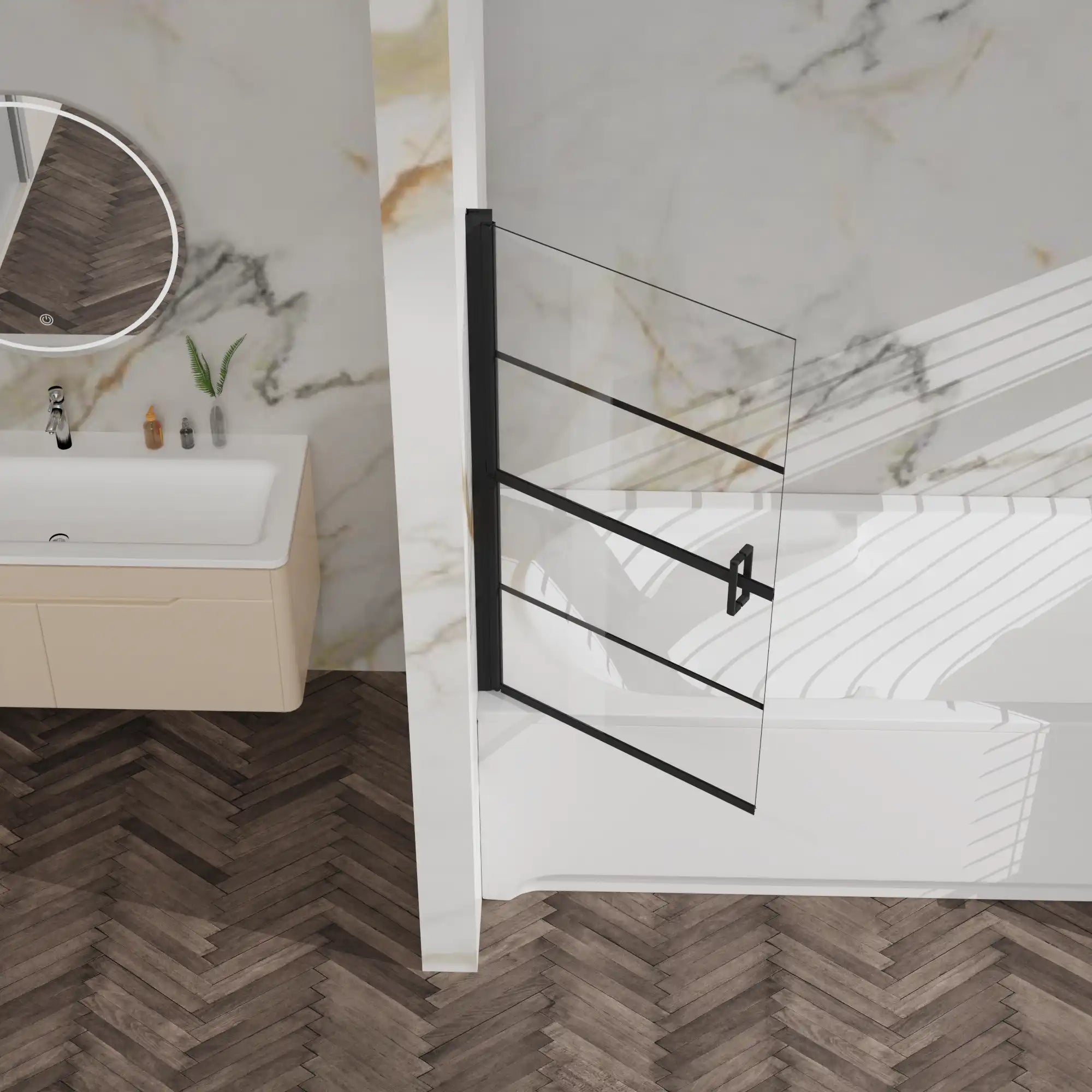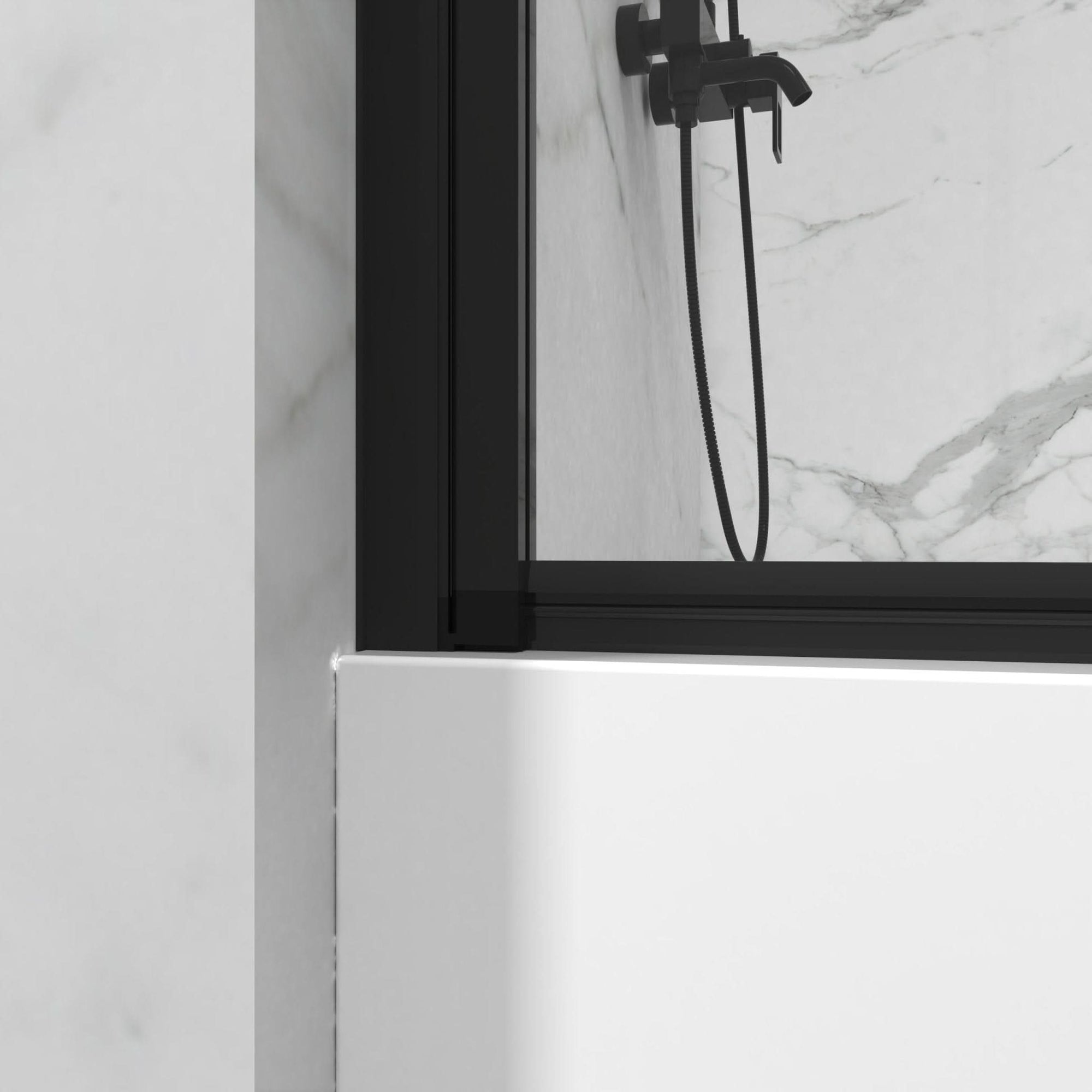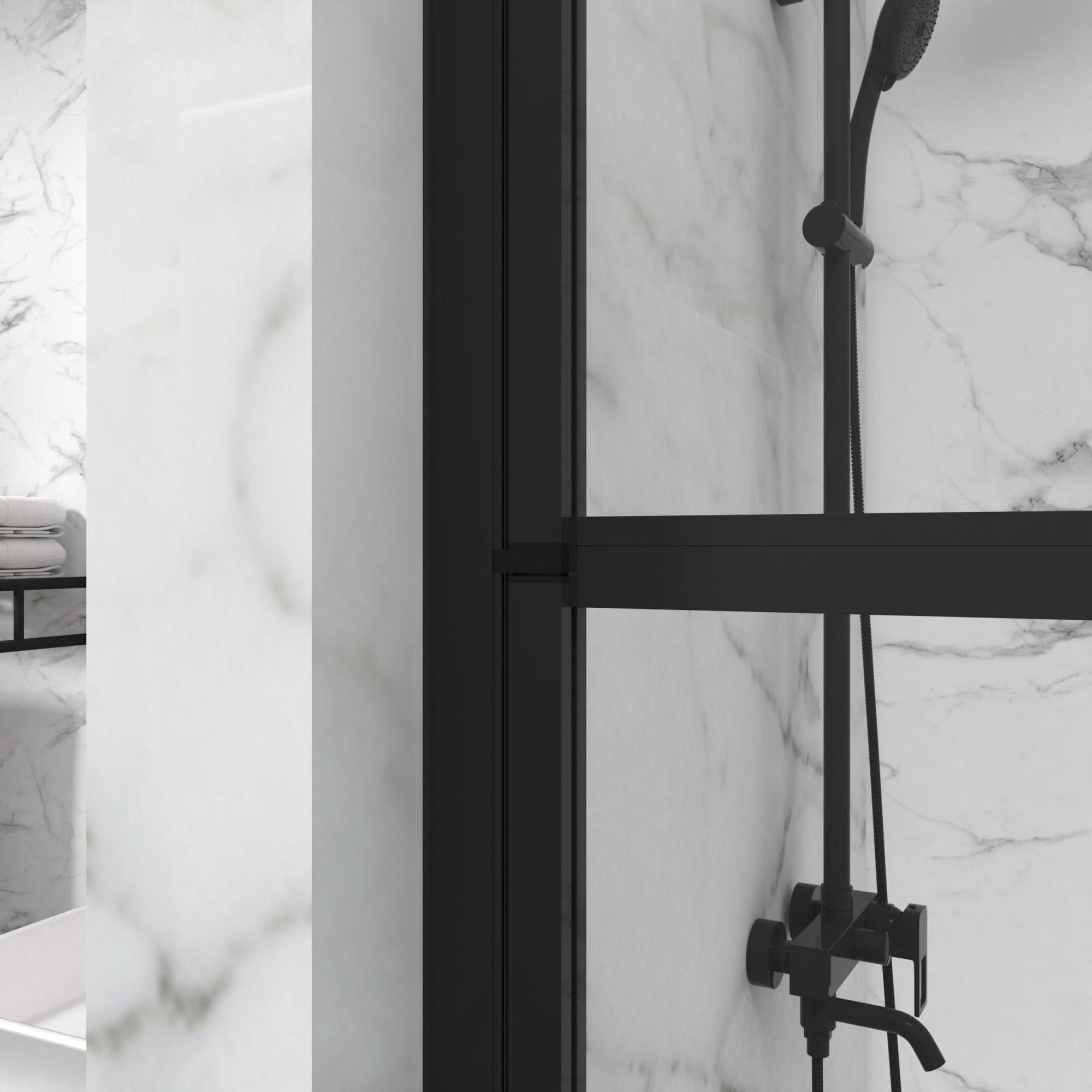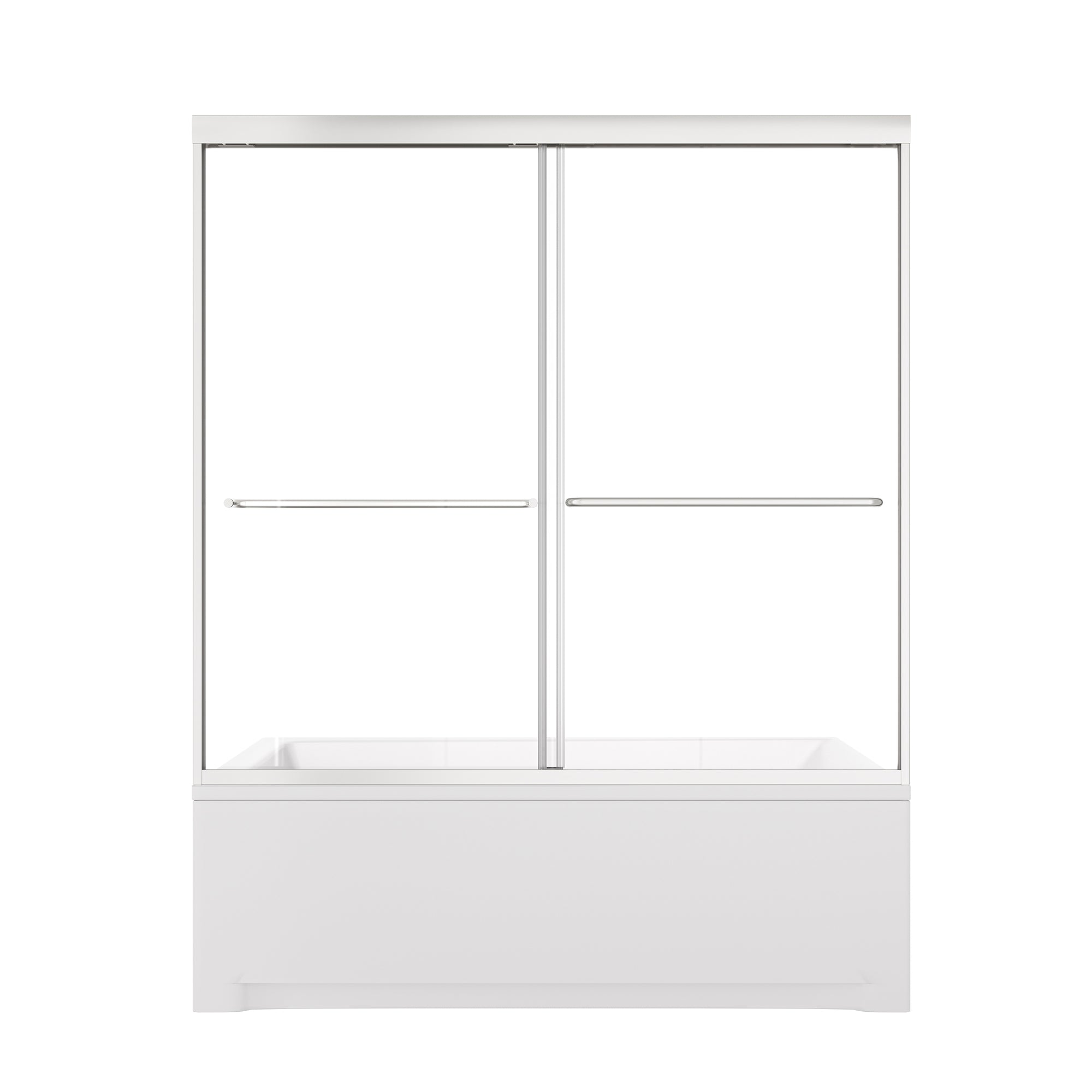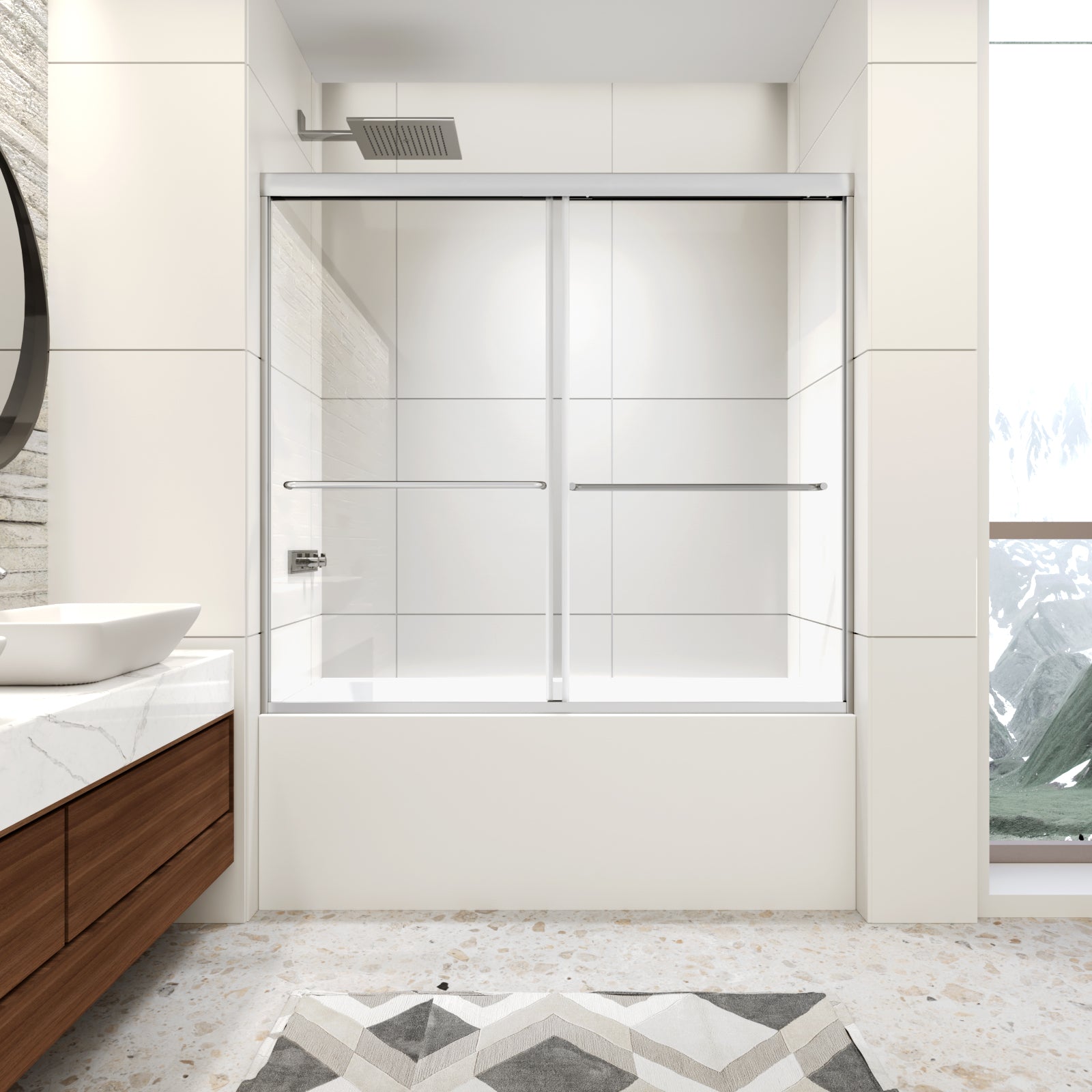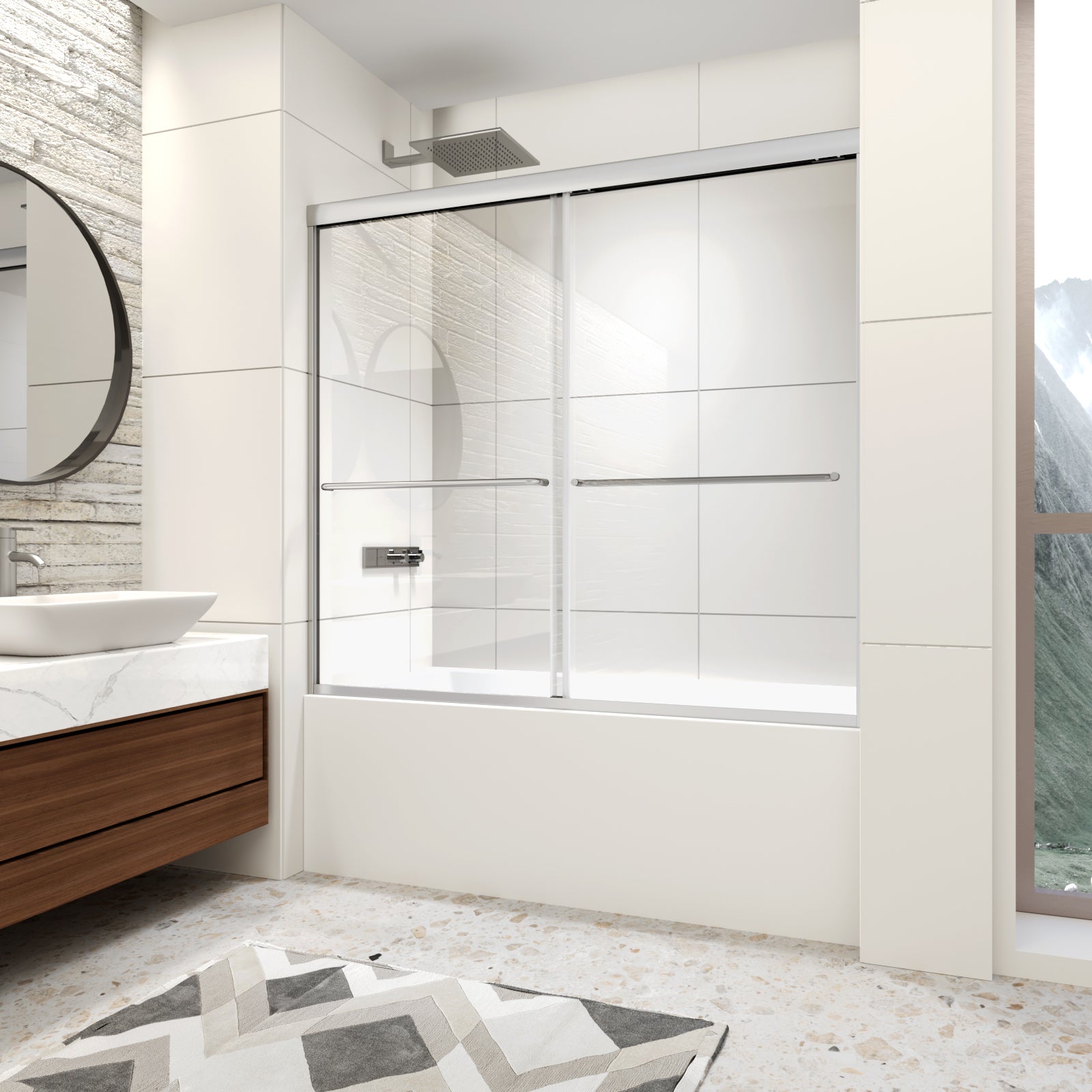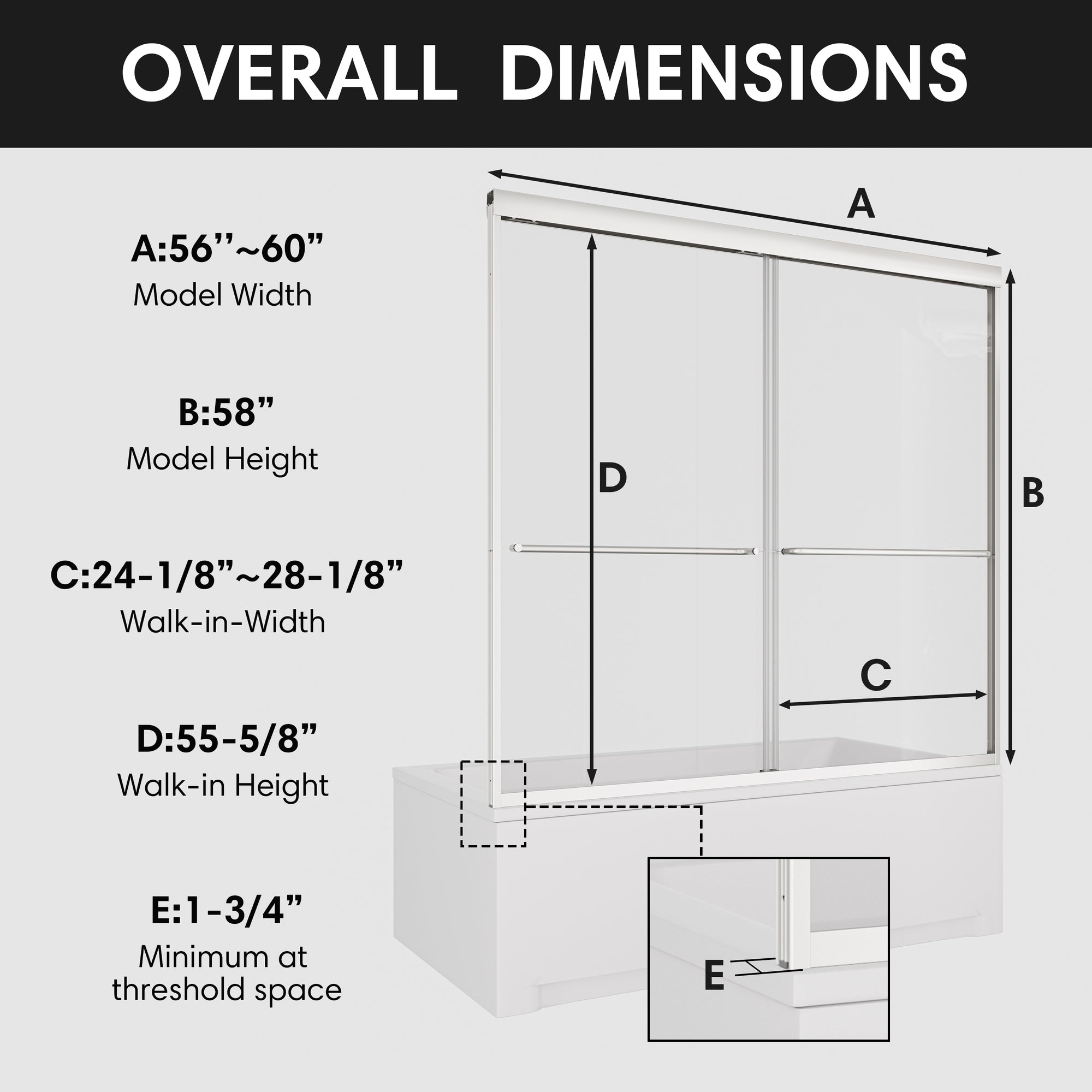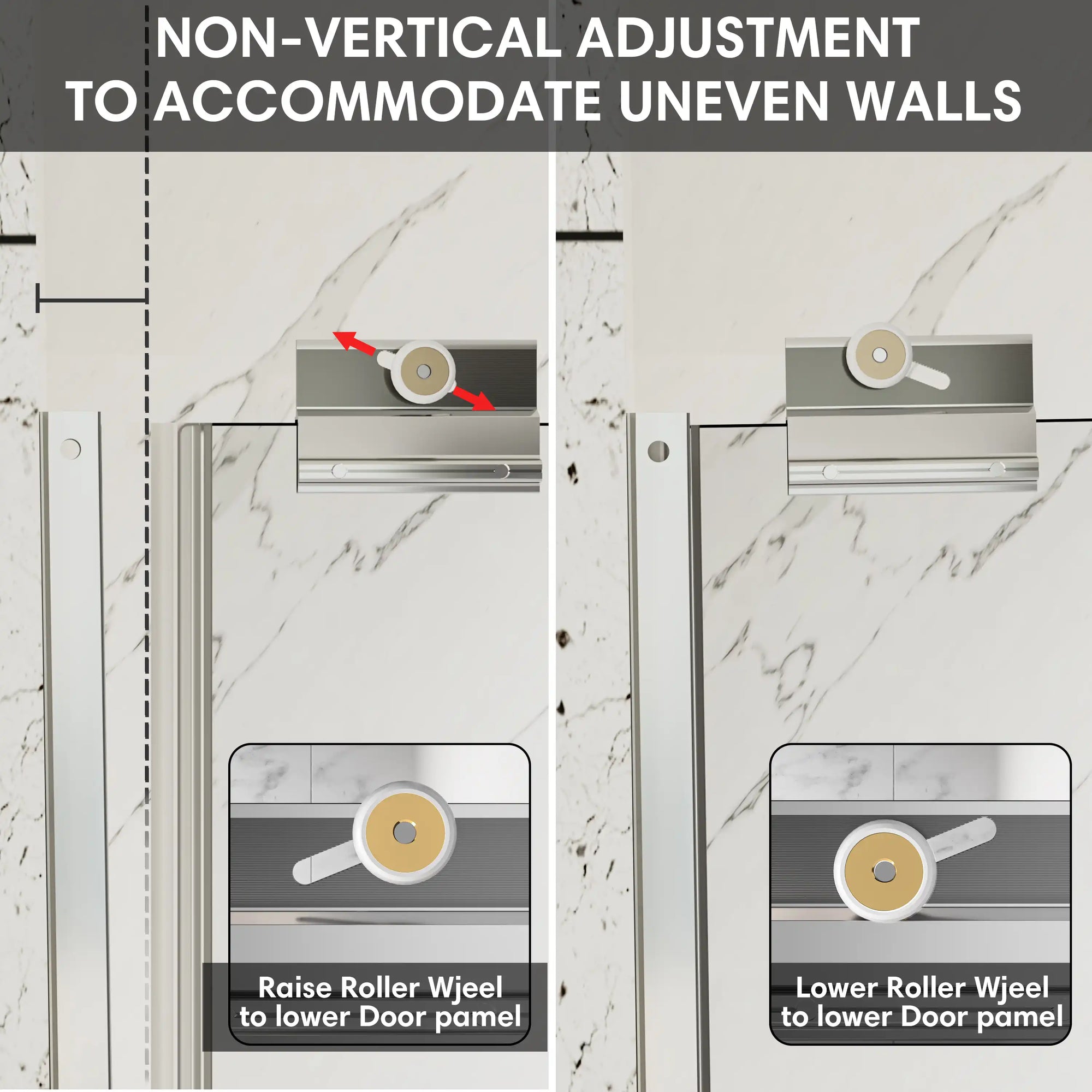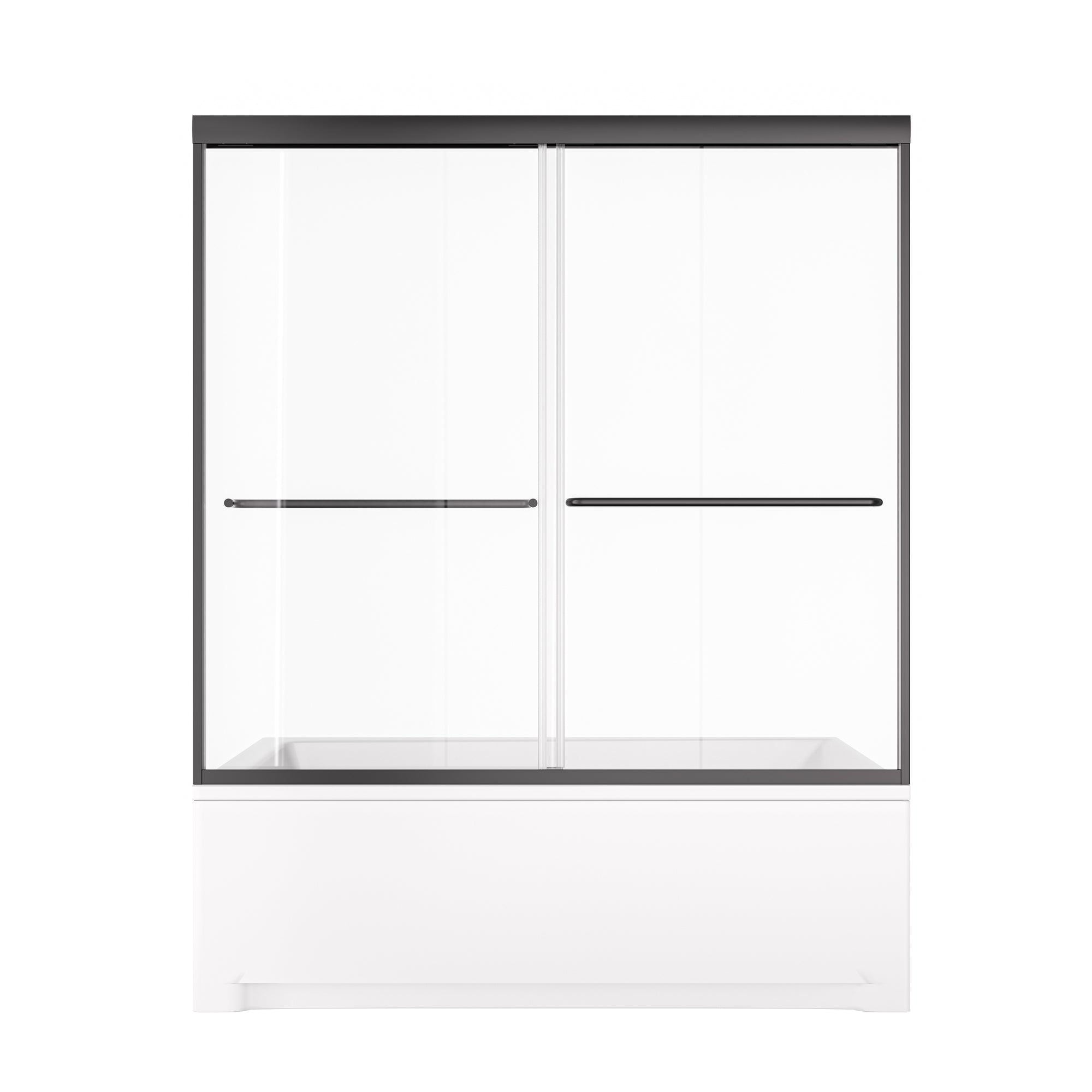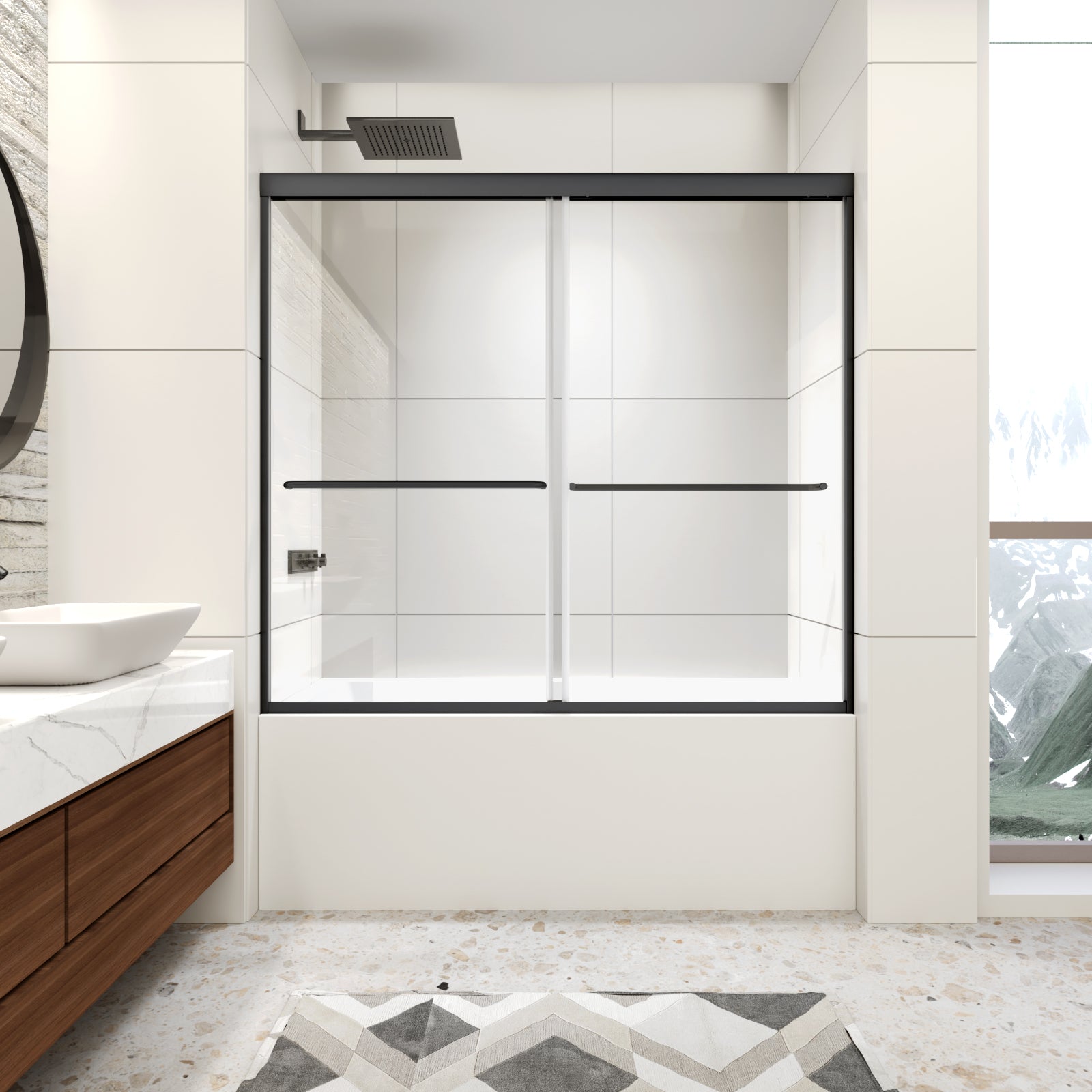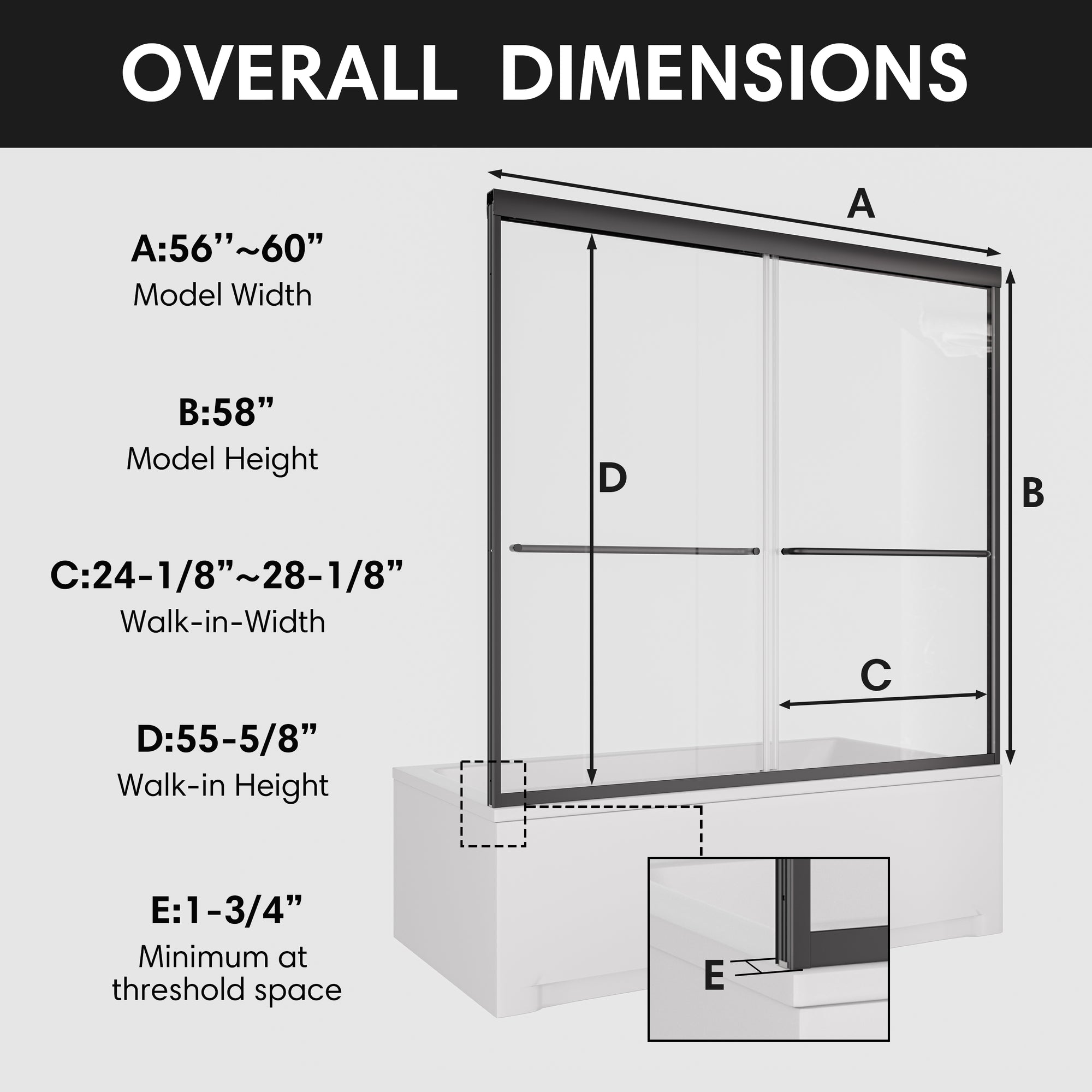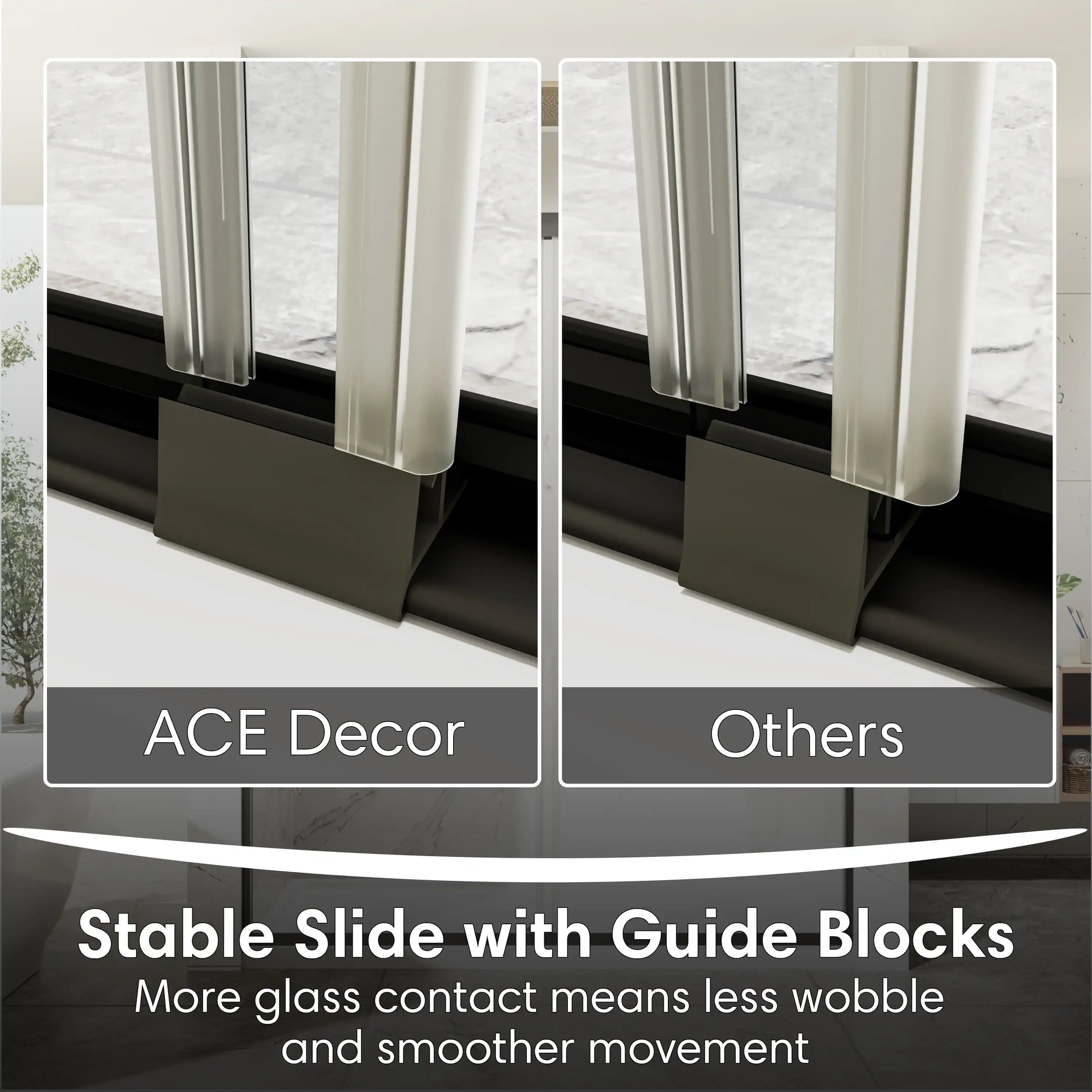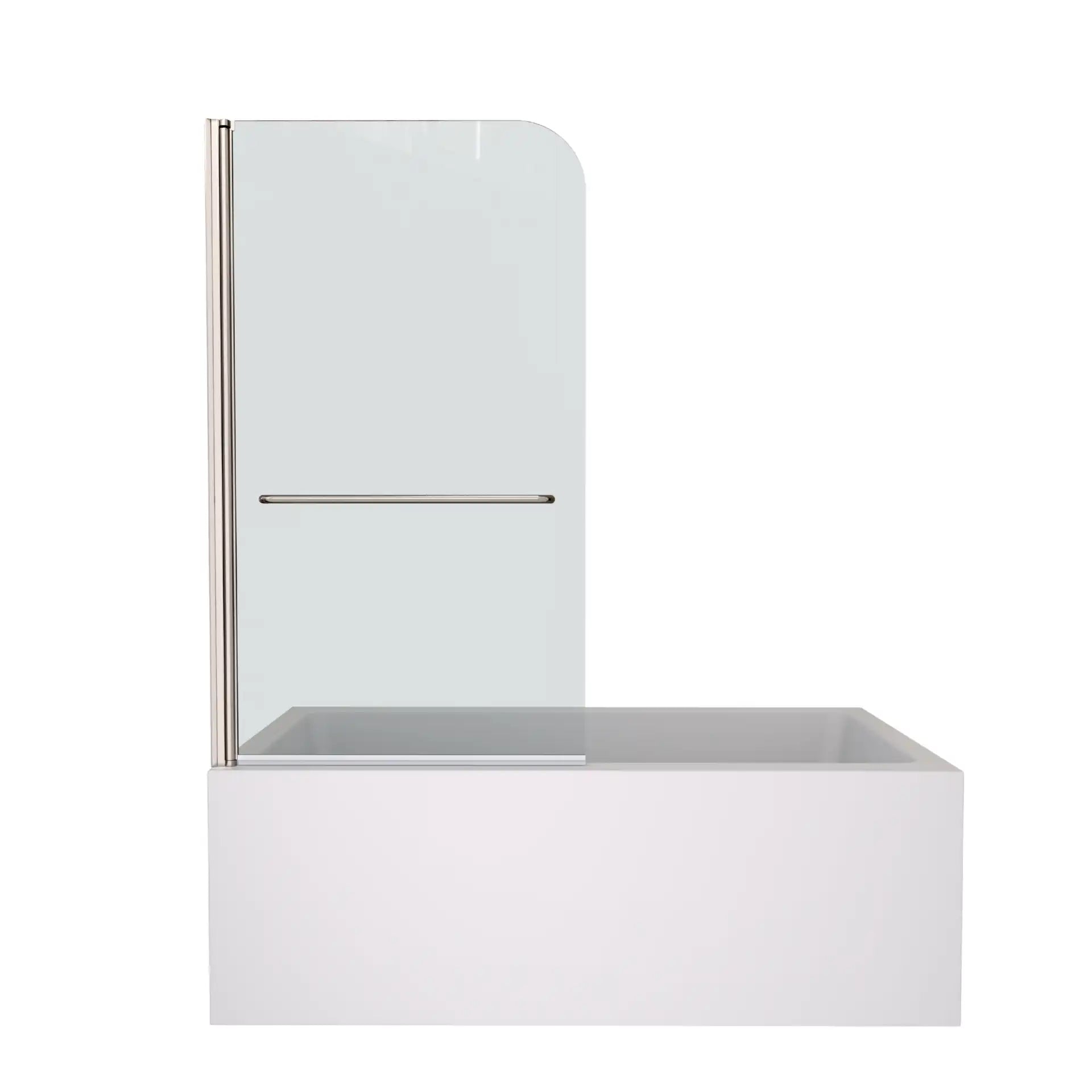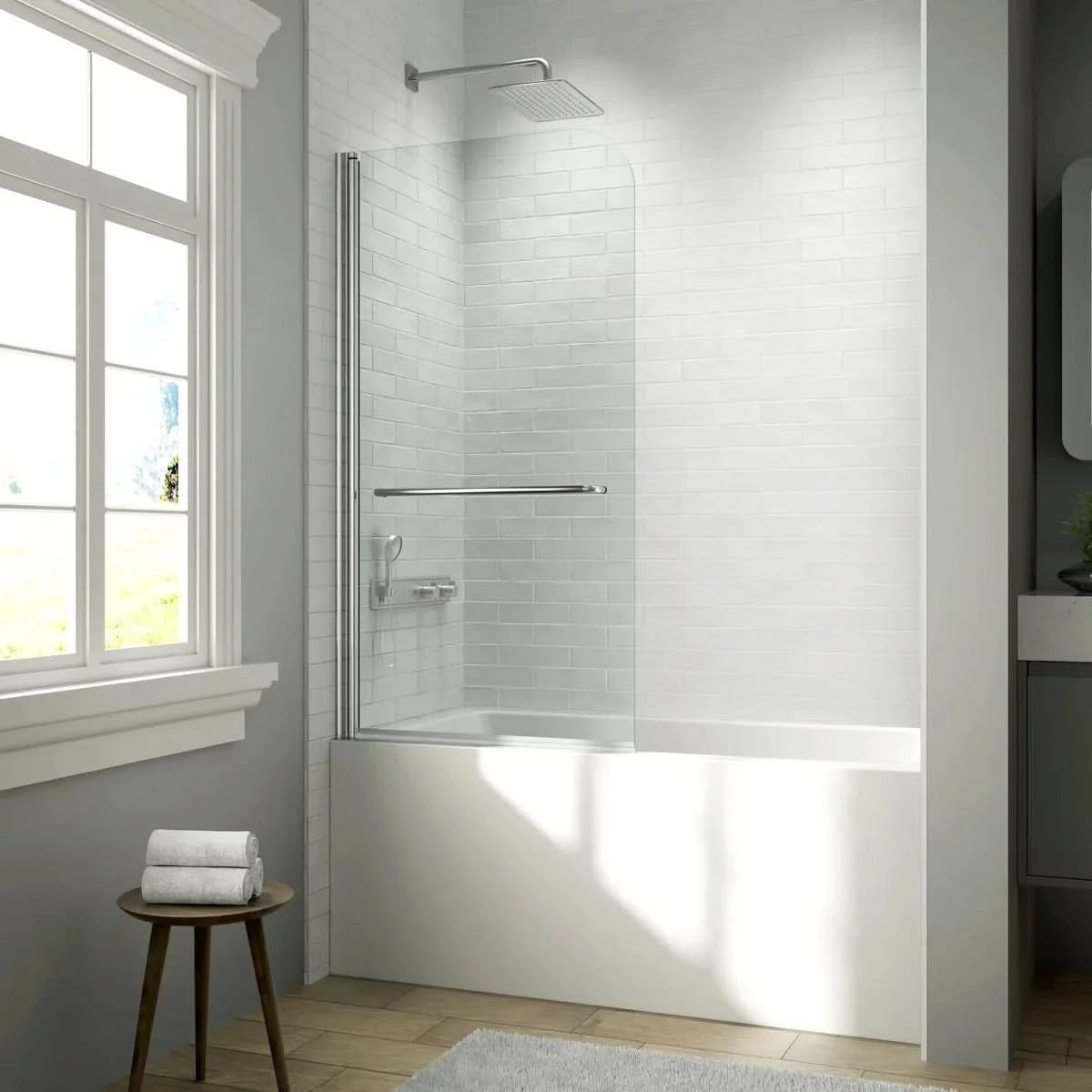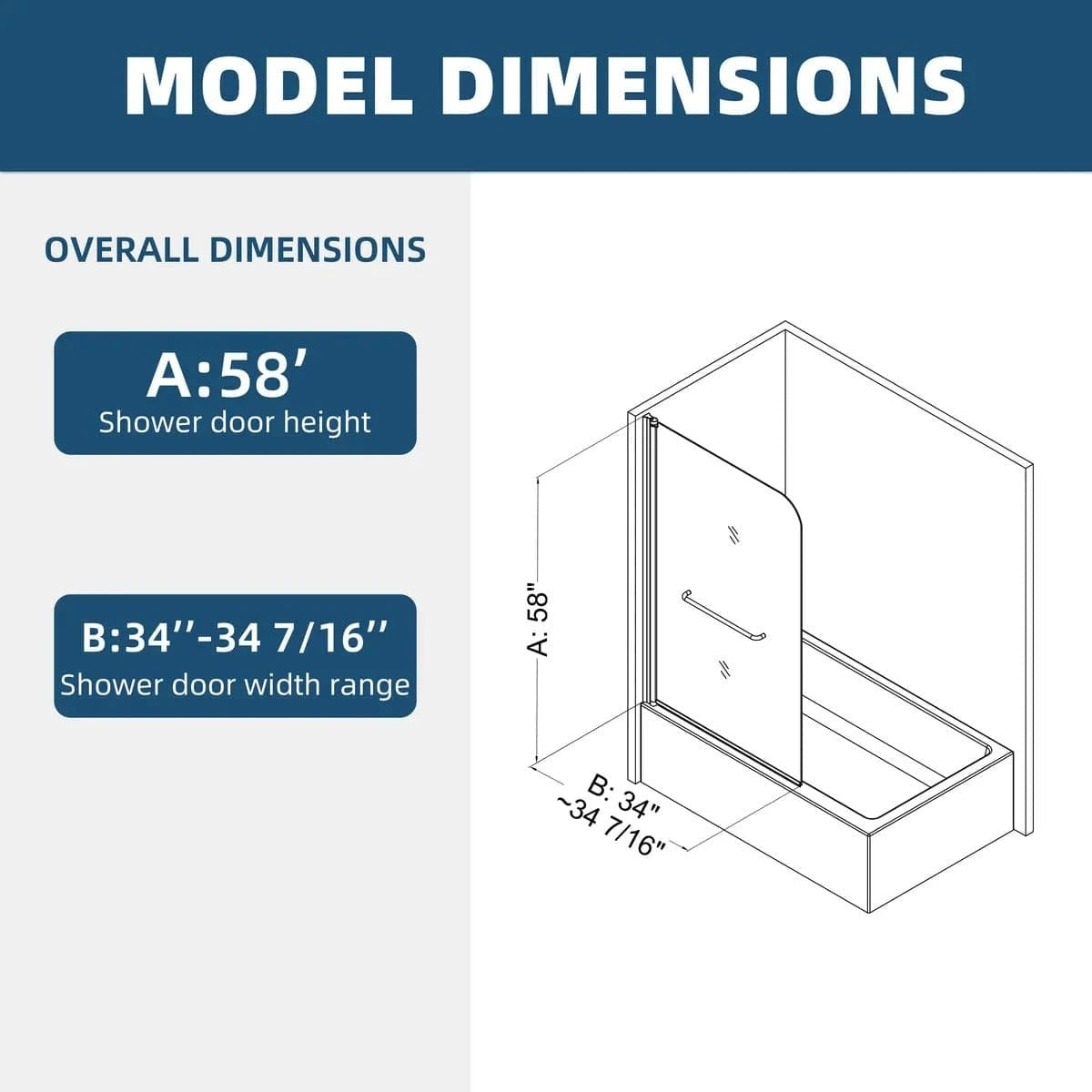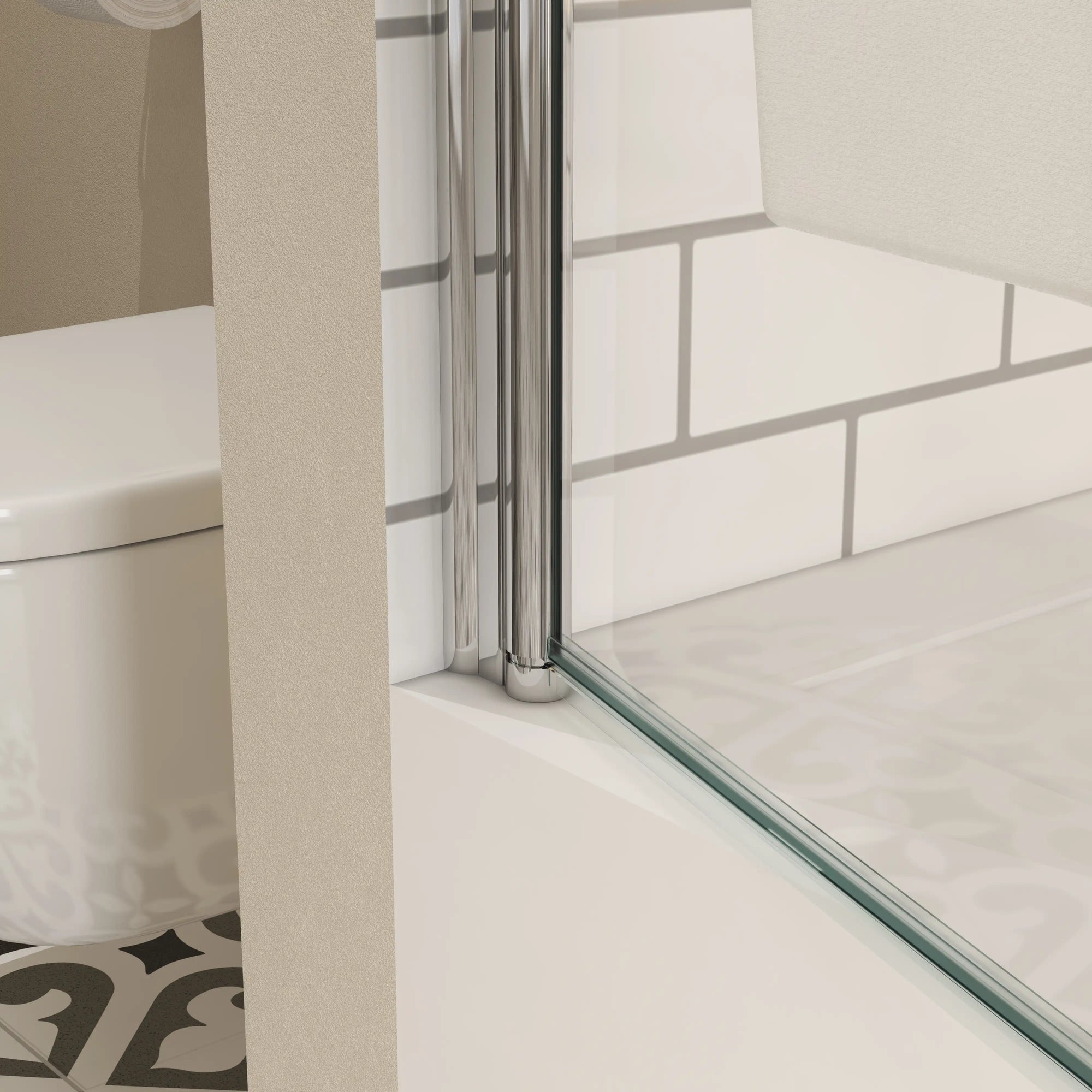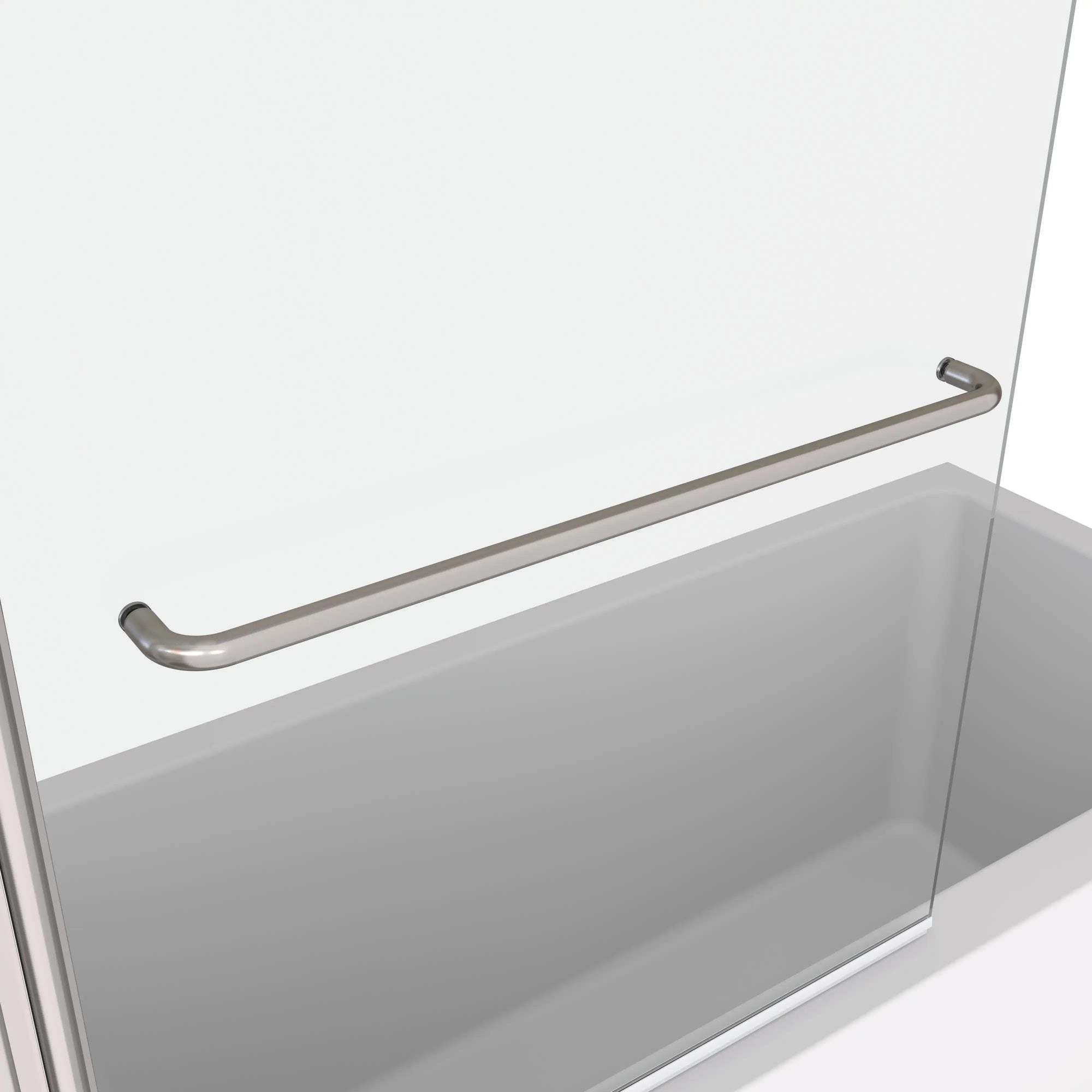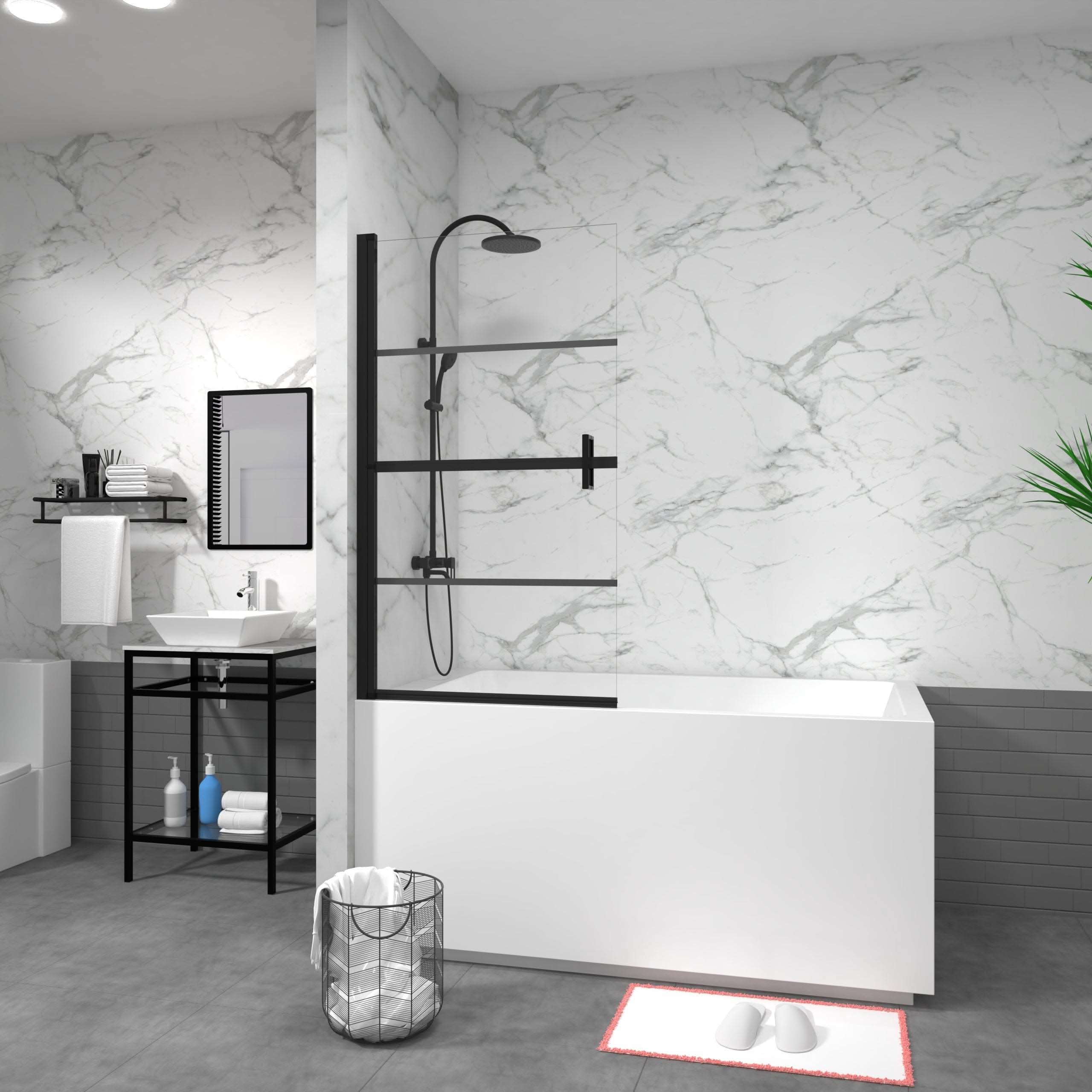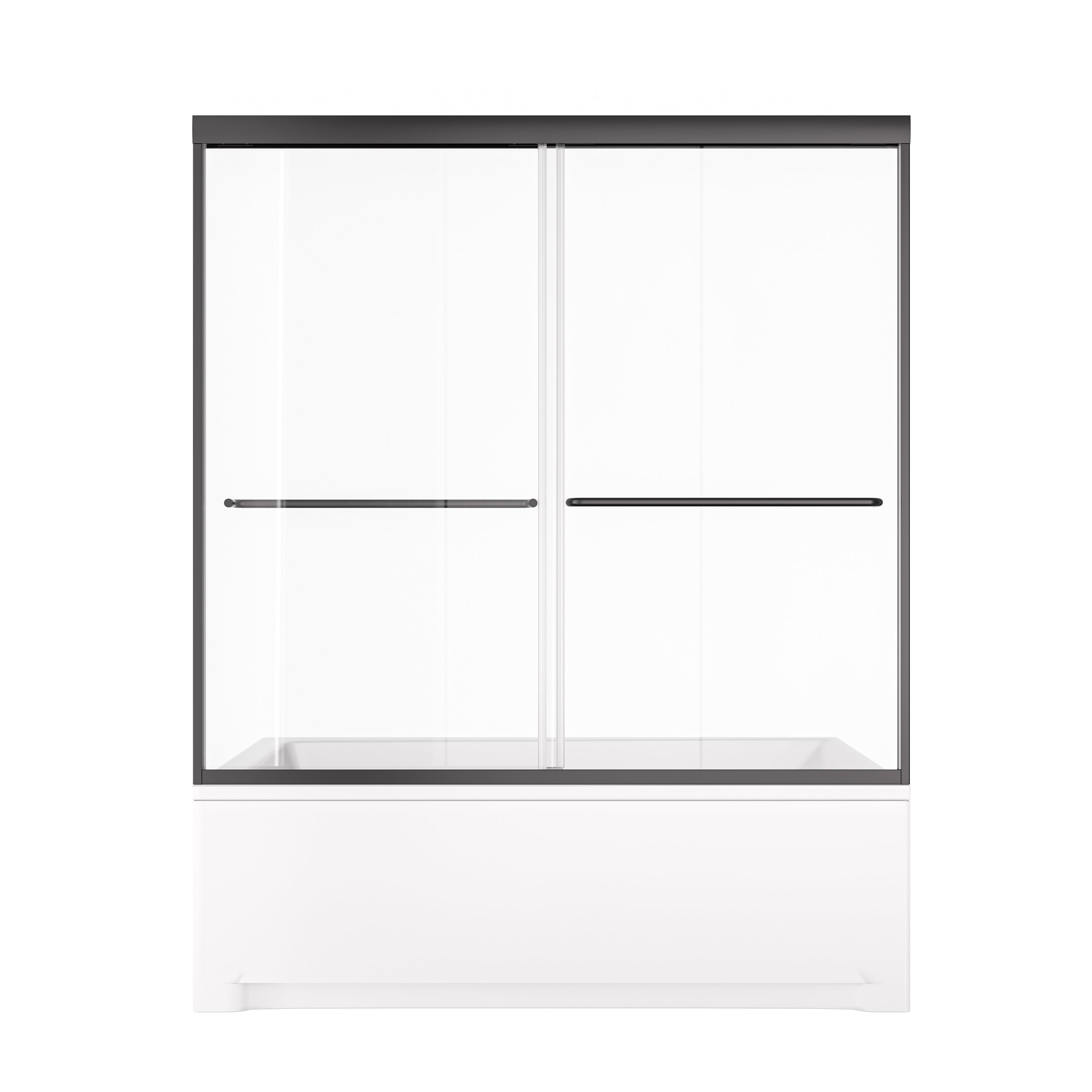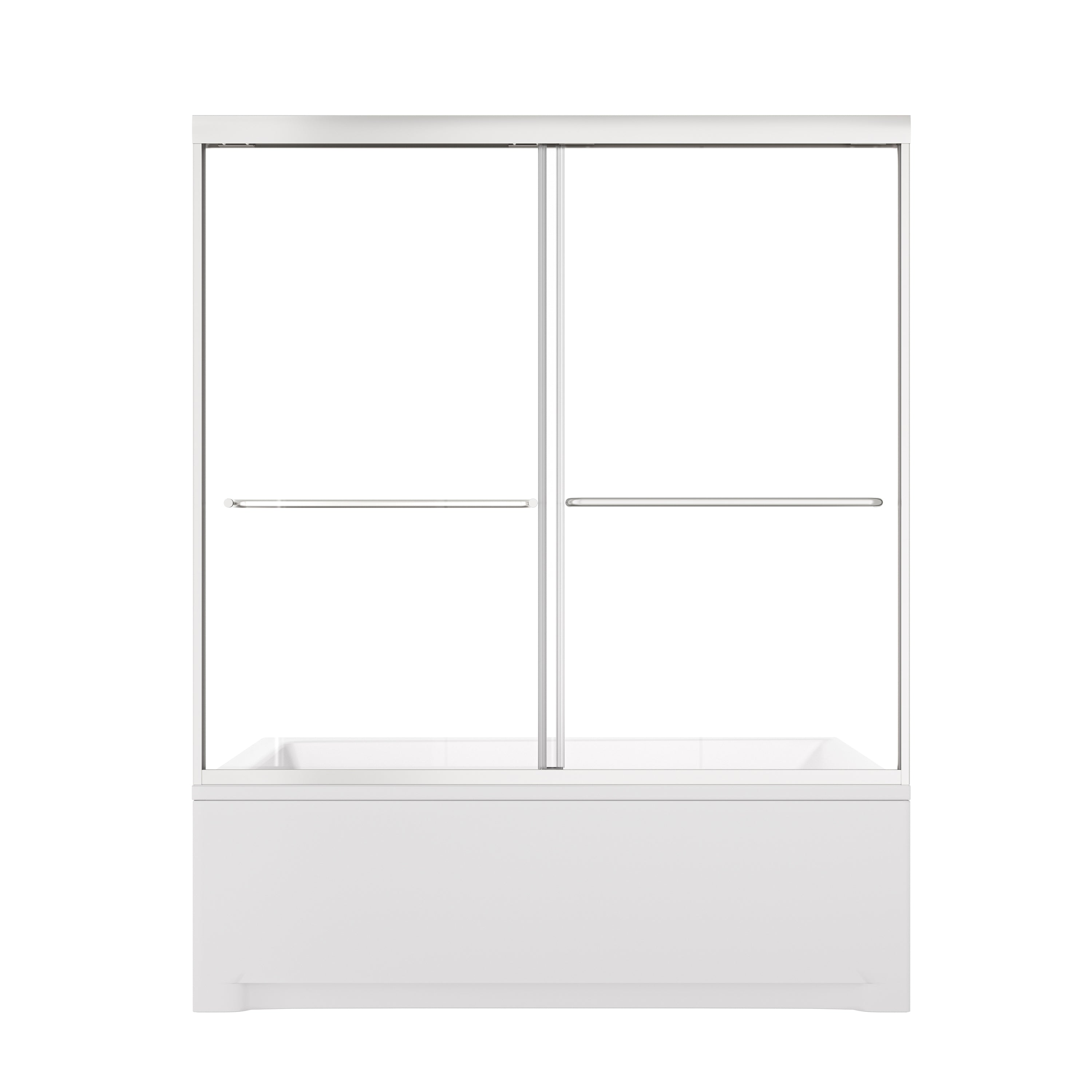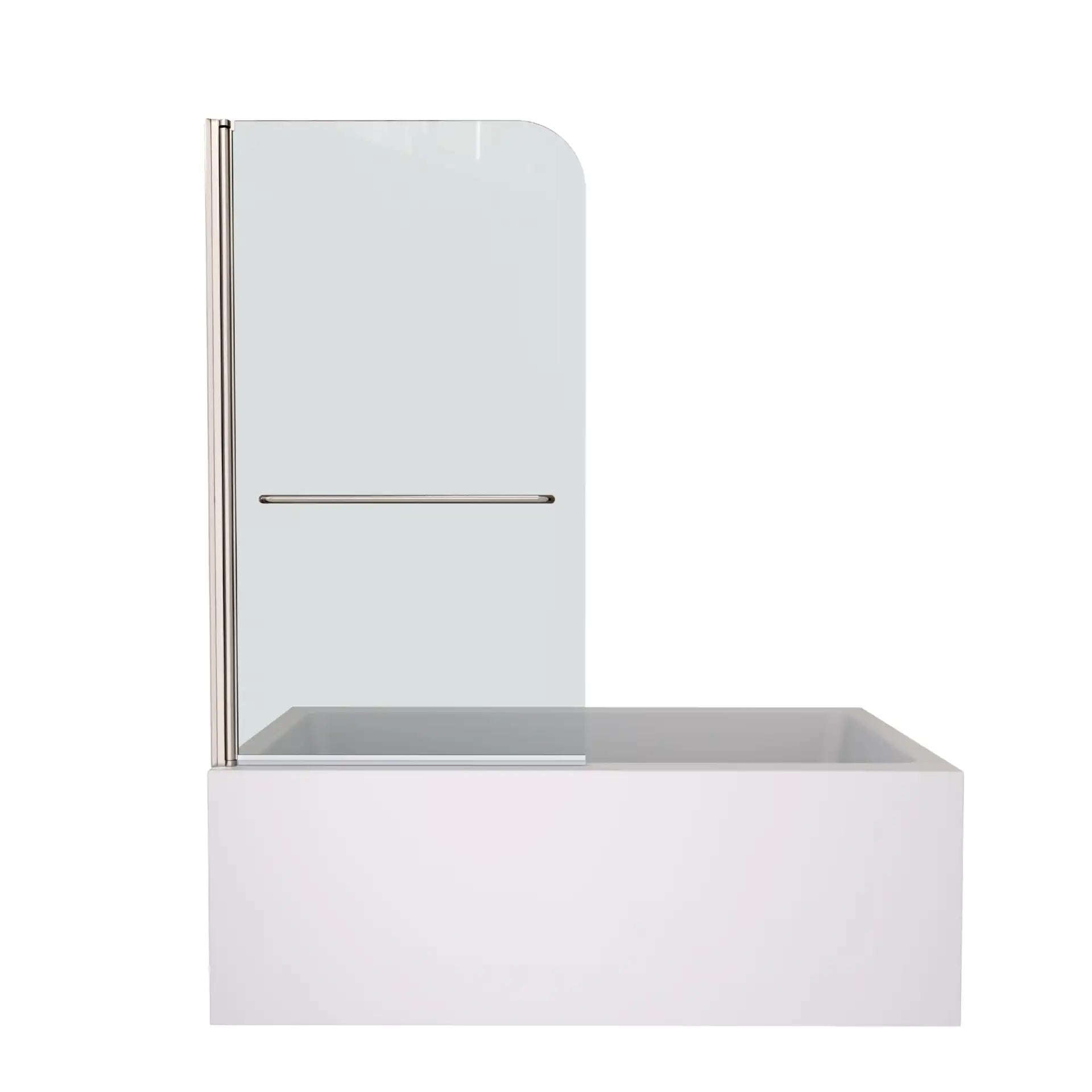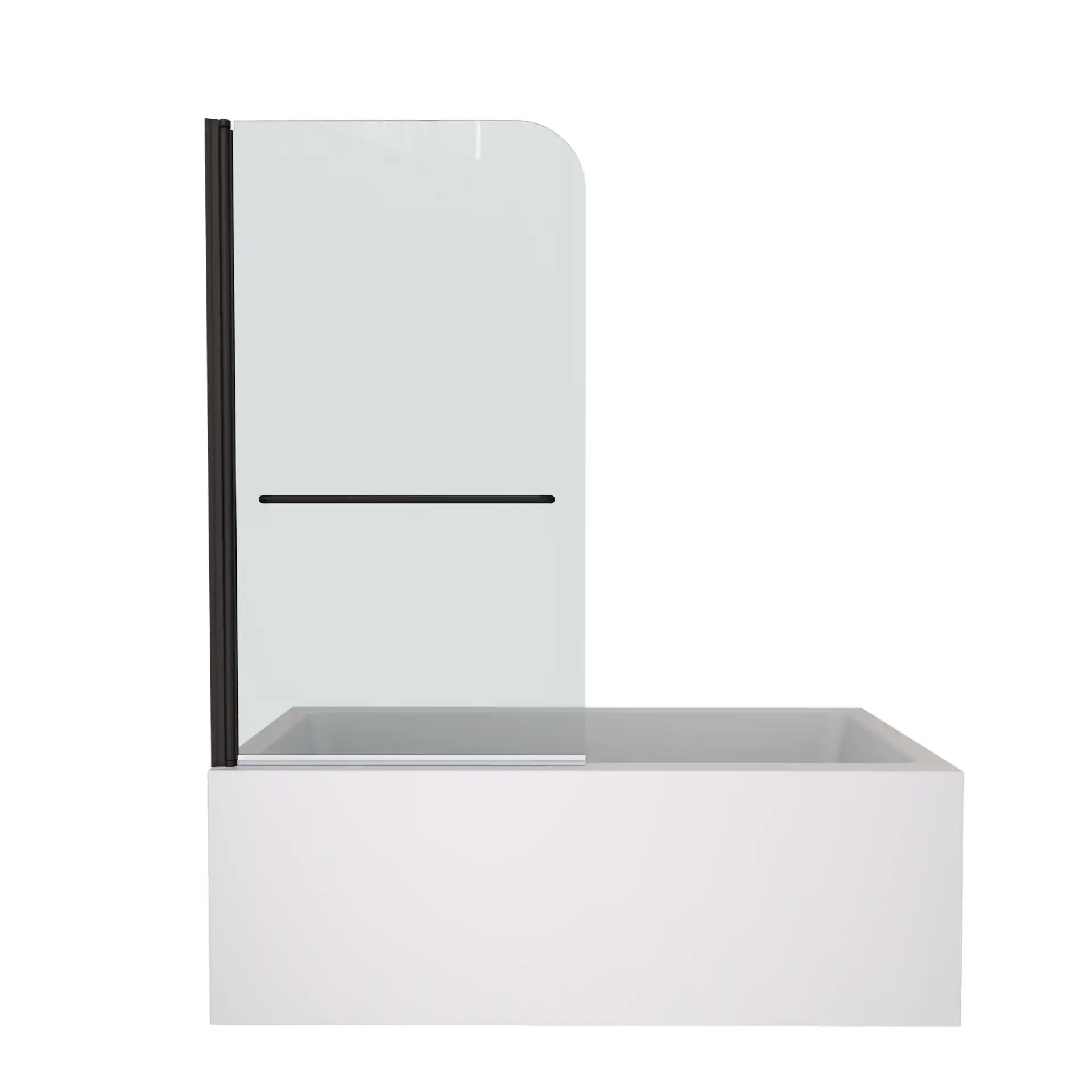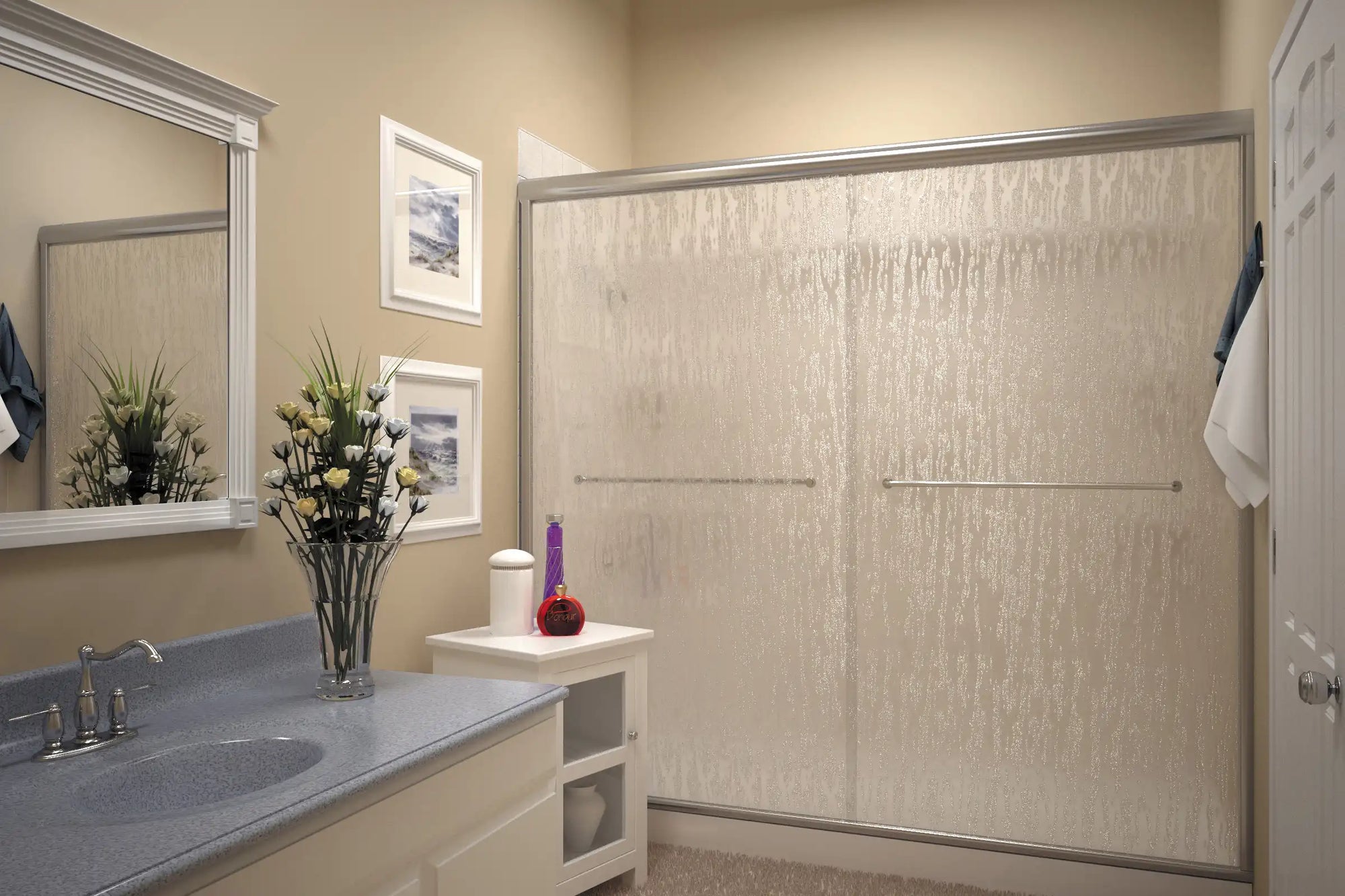Table of Contents
- What Is a Half Glass Shower Door for Bathtub?
- Key Benefits and Drawbacks: Pros and Cons
- Real-Life Experiences: What You Can Expect
- Installation Tips and Considerations
- Cleaning and Care: Here's How to Keep It Sparkling
- Glass Types: What Are Your Options?
- Cost Breakdown: What Should You Expect?
- What to Consider Before Buying
- Is it Possible to Put a Half Glass Door on a Bathtub?
- Real User Scenarios: Will It Work for You?
- Final Verdict: Is It Right for You?
- Related Articles
There are few greater pleasures in life than a long soak in the bathtub — but the layout of your bathroom can determine whether it's a relaxing and fulfilling experience or nothing more than a disappointing, even irritating inconvenience. And this is where a half glass shower door for bathtub comes into play: a modern, stylish upgrade that manages to combine looks with practicality.
But is this clever design just all form and no function? This all-inclusive guide will help you understand what it is, the pros and cons, how to select the best type of glass, installation tips, long-term care and details about it you probably never thought about.
What Is a Half Glass Shower Door for Bathtub?
A half glass shower door for bathtub is a single pane of glass designed to cover only part of the bathtub, usually one-third to one-half of its length. Unlike full glass enclosures that completely seal the space, this design intentionally leaves an open section. Typically, the open area is positioned away from the showerhead so that water is directed toward the covered side.
This hybrid design serves two main purposes:
- It helps contain most of the water spray while still allowing easy access in and out of the tub.
- It creates a sense of openness, letting light flow freely and making the bathroom appear larger.
This blend of practicality and aesthetics has made half-glass panels a popular choice in modern bathroom design, particularly in homes where space is limited or where homeowners want a minimalist, spa-like look.

Key Benefits and Drawbacks: Pros and Cons
When you're evaluating whether to install a half glass shower door for bathtub, the key is balancing style with practicality. This type of door can instantly modernize your bathroom, but the actual experience depends heavily on your layout and installation choices.
Why They Work Well
The most obvious benefit is the aesthetic upgrade. A half panel of clear glass makes a bathroom feel brighter and more spacious, removing the visual clutter of shower curtains. Maintenance is simple — a quick wipe with a squeegee is usually enough to keep it spotless. For those who value design, the clean lines and open atmosphere can completely transform the feel of the room.
Another advantage is durability and hygiene. Tempered safety glass doesn't stain or mold the way fabric does, and it can last for years with minimal upkeep. Many homeowners also notice that the open design makes the bathroom feel calmer, more like a luxury spa than a daily utility space.
The Common Drawbacks
However, this design is not without its frustrations. The biggest issue is water control. Because the panel covers only part of the tub, some splashing is almost inevitable. Short panels in particular tend to leave puddles on the bathroom floor. Another drawback is temperature comfort: without a full enclosure, steam escapes quickly. In small bathrooms this may not matter, but in larger or drafty spaces the shower can feel colder.
Privacy is another limitation. A half panel offers little shielding, which makes it less ideal for bathrooms shared by multiple family members. Cost also plays a role: while less expensive than a full enclosure, glass panels are still a bigger investment than a simple curtain.
Quick Comparison
| Aspect | Advantages | Drawbacks |
|---|---|---|
| Design & Aesthetics | Creates a minimalist, modern look; makes the bathroom feel larger. | Limited privacy, not ideal for shared bathrooms. |
| Cleaning & Hygiene | Very easy to wipe down; no mold or mildew buildup like curtains. | Hinges and seals require routine checks and care. |
| Water Control | Handles splashes better than curtains, especially with longer panels. | Some water always escapes, leading to wet floors. |
| Comfort | Airy, light-filled design that enhances atmosphere. | Steam escapes quickly, which can feel drafty. |
| Durability & Value | Tempered glass is long-lasting and adds property value. | More expensive than curtains; custom sizing raises the cost. |
A half glass shower door for bathtub delivers real benefits in style, hygiene, and openness, but requires careful choices on panel length and showerhead placement to minimize its drawbacks.

Real-Life Experiences: What You Can Expect
One reason opinions on half glass shower doors are so divided is that experiences vary dramatically depending on installation quality and bathroom size. Some homeowners find the setup flawless, while others complain about constant water on the floor.
- In small bathrooms, steam tends to stay contained, so the shower doesn't feel uncomfortably cold.
- In large bathrooms, the openness can create drafts, making the shower less cozy.
- With longer panels (1.2–1.4m), splashing is usually minimal, but shorter panels almost always result in puddles.
- Those who value style above all else often love the simplicity of glass, while those who prioritize function sometimes wish they had opted for a full enclosure.
The key takeaway is that the design itself isn't flawed — it's about whether it fits your particular bathroom and lifestyle.
Installation Tips and Considerations
If half glass shower doors for bathtub unit are to be successfully installed in the long run, installation is an extremely important aspect of the process. Here is some of what you'll need to think about:
Standard vs. Custom Sizes
There is no such thing as a standard size for half-glass tub doors. Tub heights widths and lip thicknesses differ. Always:
- Measure your tub twice — from top to bottom, side to side and front to back. For a detailed guide, check out our how to measure a shower door page.
- Verify the material of the wall (tile, drywall, stone) to see if it is compatible with the anchor.
- Opt for custom cut glass if your space comes with awkward angles or obstacles.
Professional vs. DIY Installation
While some frameless models are marketed as "easy install," glass is heavy, fragile, and dangerous if mishandled. Improper alignment or sealing can result in:
- Leaks and water damage
- Glass instability
- Difficult warranty claims
Sealing & Safety
For sealing small leaks through which water may escape, apply a bead of clears silicone sealant around the fitting. Make sure:
- A tempered glass or laminated safety glass is employed as a door.
- Edges are smoothened to prevent unintended cuts and are rust free.
- Hardware is rust-resistant (stainless steel or brass preferred).
| Installation Aspect | What to Check | Mistakes to Avoid |
|---|---|---|
| Measurements | Height, length, wall type | Assuming a “standard” size fits all tubs |
| Panel Length | Longer panels for better splash protection | Choosing short panels to save cost |
| Sealing | Apply silicone and inspect regularly | Ignoring small leaks until damage grows |
| Hardware | Rust-proof, safety-tested parts | Using cheap hinges or brackets |
The success of your half glass shower door is often determined not by the glass itself, but by how well it is installed and sealed.
Cleaning and Care: Here's How to Keep It Sparkling
A half glass shower door is lower maintenance than curtains, but it still needs regular care. The key is to prevent buildup before it starts.
- Daily: Run a squeegee over the panel after showers. This prevents water spots and soap residue.
- Weekly: Clean seals and hinges with a mild, non-abrasive cleaner. Avoid bleach and ammonia, which can corrode hardware.
- Monthly: Inspect silicone lines for cracks or mold. Replace if necessary.
Because the design leaves part of the tub open, water often drips onto the floor. Using a bath mat or non-slip rug helps prevent slips. Good ventilation also reduces the chance of moisture damage in the wider bathroom.
Glass Types: What Are Your Options?
When choosing a half glass shower door for bathtub, the type of glass you select is just as important as the design itself. Glass isn't only about looks — it affects safety, maintenance, privacy, and even how bright your bathroom feels. Here's a closer look at the most common options.
Tempered Glass – The Standard Choice
Tempered glass is the industry standard for shower doors. It's heat-treated to make it much stronger than ordinary glass, and when it does break, it shatters into small blunt pieces instead of sharp shards. This makes it a safe choice, especially for households with children.

| Pros | Cons |
|---|---|
|
Affordable, widely available, very safe. |
Offers little privacy unless you choose a frosted finish. |
Laminated Glass – Maximum Safety and Soundproofing
Laminated glass is made by sandwiching a thin plastic layer (usually PVB) between two sheets of glass. If the glass breaks, it stays bonded together instead of scattering. This not only boosts safety but also reduces noise — handy if your bathroom is close to a bedroom.

| Pros | Cons |
|---|---|
|
Extremely safe, reduces noise, blocks more UV light. |
Heavier and pricier than tempered glass. |
Ultra-Clear (Low-Iron) Glass – The Luxury Look
Ordinary glass has a slight greenish tint because of iron content. Low-iron or “ultra-clear” glass removes this tint, resulting in pure transparency. The effect is subtle but noticeable, especially in bright bathrooms.

| Pros | Cons |
|---|---|
|
Crisp, transparent look; ideal for modern minimalist interiors. |
More expensive, no privacy at all. |
Frosted or Acid-Etched Glass – Light with Privacy
Frosted glass is achieved by acid-etching or sandblasting the surface, giving it a semi-opaque appearance. This lets light through while blurring shapes behind the panel. It’s a great way to balance openness with modesty.

| Pros | Cons |
|---|---|
|
Provides privacy, still brightens the room, hides water spots better. |
Slightly harder to clean than clear glass because the surface is textured. |
Patterned or Tinted Glass – Style and Personality
Patterned glass comes with designs pressed or etched into the surface, while tinted glass incorporates subtle colors like bronze, gray, or blue. Both options add personality and can tie into broader bathroom design themes.

| Pros | Cons |
|---|---|
|
Decorative, customizable, provides some privacy. Tinted versions can create a warm or dramatic atmosphere. |
Patterns may not suit every style; tints can reduce brightness. |
If you’re unsure, start with tempered glass in a frosted or patterned finish. It’s the most balanced option — safe, affordable, and offers at least some privacy. Ultra-clear glass looks stunning, but works best when the bathroom is private and design is your top priority.
Cost Breakdown: What Should You Expect?
Here's a realistic cost estimate based on U.S. averages:
| Item | Price Range |
|---|---|
| Standard Tempered Glass Panel | $200–$600 |
| Custom Etched or Laminated Glass | $600–$1,200+ |
| Professional Installation | $150–$500 |
| Additional Hardware & Seal Kits | $50–$150 |
| Total Investment | $400–$1,500+ |
While pricier than a curtain, this upgrade lasts longer, resists mold, and adds style and value.
What to Consider Before Buying
Before you hit the ‘buy now' button, consider these questions:
What Are the Measurements of My Bathroom?
- Will it be possible to fit a stationary panel without walls, vanities, toilets in the way?
- Do you want a door that pivots or are you satisfied with a fixed panel?
Do I Value Privacy or Openness?
- Shared space = go frosted or patterned.
- Your personal master bath = clear or ultra-clear might be good.
Am I Ready for the Price?
- Is this part of a larger renovation or is this a stand-alone upgrade?
- Do you require custom glass because of shower shape?
How Often Will I Clean It?
- Glass requires ongoing maintenance to shine. Opt for coatings or materials that reflect your habits.

Is it Possible to Put a Half Glass Door on a Bathtub?
Yes — and it's growing in popularity in updates and new construction. This setup:
- Keep water in the tub area.
- Keeps warmth in, making baths cozier.
- Lowers the chances of developing mold, because glass dries faster than shower curtains.
- Takes the style of your bathroom to another level without the enclose-all-the-way feel.
Just ensure:
- The tub rim itself is flat and uniform.
- The anchors can be supported by the wall.
- The installer seals everything properly.
Real User Scenarios: Will It Work for You?
A half glass shower door for bathtub is not a one-size-fits-all solution. Think of it in terms of scenarios:
- Small bathroom: Works well; steam stays in, and space looks bigger.
- Large bathroom: Can feel drafty unless you add a longer panel.
- Style-focused homeowner: Great choice if you value modern design.
- Families with children: Less practical due to privacy and splash issues.
- Budget-conscious renovator: More expensive than curtains, but adds long-term value.
Final Verdict: Is It Right for You?
A half glass shower door for bathtub is one of the most elegant, clean looking solutions an open shower design can have. It's great for if you want:
- A spa-like environment
- Less mess from splashes
- Fewer cleaning chores
- Long-term durability
But if privacy or cost is the most important consideration — or if you share a bathroom with other people — you may have to reconsider whether this is the best fit for you.
The bottom line: If you want a practical yet luxurious upgrade to your bathroom that makes it feel brighter, more open, and easier to clean, a half glass shower door may be just what you're seeking.
Related Articles
Ready to plunge into the world of bathroom renovation ideas? Explore these selected reads to inspire your next redesign and decide on the best mix of old and new for this space.











